POWER TO THE PEOPLE:
how consumers are changing the energy landscape

The grid of the future could have wheels
THE TOP 5 ENERGY TRENDS OF 2022


how consumers are changing the energy landscape

The grid of the future could have wheels

4-5 MAY 2022
2 DAY, FREE TO ATTEND
• 120+ local & international exhibitors
• Newest trends & products
• 6 conference streams
• 200+ expert speakers
• Latest smart solutions
• CPD points & training
• Dedicated networking sessions
• Electric vehicle test drive
• 60th anniversary celebration
• And more...
smartenergyexpo.org.au

HMonkey Media Enterprises
ABN: 36 426 734 954
C/- The Commons, 36–38 Gipps St, Collingwood VIC 3066
P: (03) 9988 4950
F: (03) 8456 6720
monkeymedia.com.au
info@monkeymedia.com.au
energymagazine.com.au
info@energymagazine.com.au
ere we are at the beginning of our third year amidst a global pandemic, although it feels like we’re in a very different place than this time last year. It’s been a big adjustment as we’ve begun ‘living with the virus’, and many essential industries have been feeling the impacts of the surge in cases at the start of 2022. On the other hand, at the time of writing, I’m preparing to attend a large in-person industry event interstate, the first that I’ll have attended in years – so it’s great to see these getting underway, and I look forward to meeting some of you as these continue.
Michelle Goldsmith Journalists
Christopher Allan
Lauren DeLorenzo
Alejandro Molano Designers
Jacqueline Buckmaster
Danielle Harris
Luke Martin
Rima Munafo
Brett Thompson
To kick things off for the year, in this issue, we’ll be looking at the top 5 energy trends that we can expect to see in 2022, as well as some exciting developments to keep an eye on. Storage has emerged as a key topic in this issue, as we look at the potential of electric vehicles as ‘batteries on wheels’, and in the second installment of our two-part series, we list the emerging big battery projects around the country.
One challenge from the COVID-19 pandemic that the industry continues to grapple with is the rise of household energy debt, prompting the need for new, consumer-centric approaches to energy affordability and alleviating financial hardship. We explore some of these initiatives in this edition, as well the effectiveness of retailer hardship programs on offer.
On that note, perhaps the most important theme that I’ve seen in this issue, and in the industry more broadly, is the impact that the consumer is having on the energy landscape. Consumer habits, needs, and investments are shaping the industry, and as more virtual power plants come online, we’re starting to see households become increasingly empowered in the energy transition to lower emissions. I think that we’ll begin to see energy dialogue

becoming more reciprocal between consumers, utilities and retailers – and I think that’s an excellent step in the right direction when it comes to forming our collective energy future.
In preparation for this issue, I was able to speak with Secretary General and CEO of the World Energy Council, Dr Angela Wilkinson, about the idea of ‘humanising energy’. I found our conversation insightful, to say the least, and I encourage you to read this article. One thing Dr Wilkinson said that struck me was that the energy transition is “a process, not a destination”. I think Dr Wilkinson’s words are a great reminder that we’re not looking for a fix-all technology, nor are we likely to reach a full consensus on one strategy, fuel source or generation method. Instead, the transition will be an ongoing, constantlyevolving process, and a challenging one at that – but one that I look forward to exploring with you in this and future issues of Energy magazine.
Imogen Hartmann



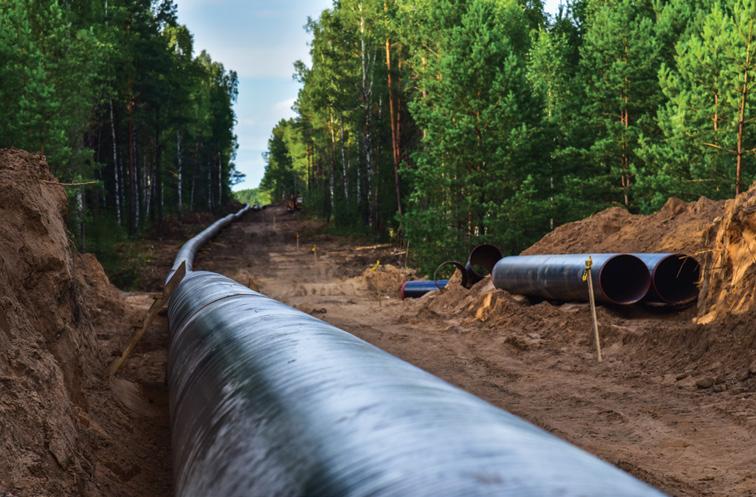













The Kurri Kurri-based 660MW gas plant, the Hunter Power Project, has been granted environmental approval, allowing for construction to begin.
The Federal Government is providing up to $600 million in equity to support the gas-fired power station, after setting a target for an extra 1,000MW of dispatchable energy in New South Wales following the Liddell Power Station closure.
Federal Minister for the Environment, Sussan Ley, said the project had been approved after a rigorous assessment and on the condition that the project proponents, Snowy Hydro Limited, meet the conditions set by the New South Wales Government when it approved the project.
“This thorough bilateral assessment with New South Wales has paved the way for the development and operation of this new critical infrastructure in a way
Afinal report from an expert panel has set out guidelines to ban embedded networks in new residential buildings in Victoria.
The Embedded Networks Review was established as part of the Victorian Government’s election commitment to improve consumer outcomes in the energy market.
The panel leading the review − comprised of energy market and consumer advocacy experts − released its final report after hearing from hundreds of frustrated Victorians feeling ‘trapped’ in embedded networks.
Embedded networks are private electricity networks that serve multiple customer premises in a building or selfcontained site.
They are commonly used to supply power to consumers in developments such
that sensitively manages, protects and rehabilitates the environment,” Ms Ley said.
Federal Minister for Industry, Energy and Emissions Reduction, Angus Taylor, said the Hunter Power Project was critical to keep the lights on and power prices low after the closure of the Liddell Power Station in 2023.
“The project is good for jobs, it’s good for business and importantly it’s good for securing affordable, reliable power,” Mr Taylor said.
“It will support up to 600 direct jobs at peak construction and 1,200 indirect jobs across New South Wales.”
The Federal Government announced its plans to proceed with the build of the gas power plant in May 2021, following a gas ultimatum that was issued the previous year.

Since then, the project has been met with considerable backlash from experts, industry bodies and consumers.
“A utility-scale battery for this site was the smarter choice both economically and environmentally,” Clean Energy Council Chief Executive, Kane Thornton, said.
“The Kurri Kurri plant is only expected to run for about one week of every year. When battery storage can deliver a cost saving of 30 per cent while delivering greater flexibility and significantly reducing emissions intensity, it makes no sense to be spending taxpayer dollars on this fossil fuel project.
“It sends the wrong message to clean energy investors and to communities, at a time when the International Energy Agency says that there is no space for new fossil fuel developments if the world is to reach net-zero emissions by 2050.”

as apartment blocks, retirement villages, social housing, and caravan parks.
Victorian Minister for Energy, Environment and Climate Change, Lily D’Ambrosio, said, “We want to ensure that Victorians living in new and existing residential embedded networks can get access to the same competitive retail offers and consumer protections that other people have.
“That’s why we promised to act to ban these networks in new apartment blocks, which too often lock in high costs.
“I want to thank the panel for their work and their report, which we will respond to later this year.”
The panel recommended reforms for new and existing embedded network customers in apartment buildings, supporting the Victorian Government’s proposal to ban new networks from 1 January 2023, with exemptions if operators can show that 50 per cent or more of a
site’s electricity consumption is met by on-site, low-cost renewable energy.
The reforms will also mean the more than 140,000 Victorians living in residential embedded networks will have access to the same competitive retail offers and consumer protections as other Victorian consumers.
The promise to ban embedded networks is the latest in a series of energy market reforms already delivered by the Victorian Government, including the Victorian Default Offer, a ban on door-to-door sales and cold calling, and increased penalties for retailers who engage in dodgy behaviour.
These measures aim to increase fairness, reduce market complexity and contribute to a fall in power bills.
The Victorian Government will consider the panel’s final report and respond to its recommendations by mid-2022.
The Australian Renewable Energy Agency (ARENA) has launched a $100 million funding round for new battery energy storage projects of 70MW or larger.
ARENA’s Large Scale Battery Storage Funding Round will provide up to $100 million in funding to new grid scale batteries equipped with advanced inverters and which operate in the National Electricity Market or Western Australia’s Wholesale Electricity Market.
In addition to supporting new build projects, funding will also be available to existing grid scale batteries seeking to retrofit advanced inverter capability.
The funding round aims to incentivise and de-risk private sector investment and overcome barriers to the deployment of advanced inverter technology.
By funding advanced inverter technology at scale, ARENA hopes to provide valuable insights into the operations and emerging
capabilities of advanced inverters.
It is expected that the funding round will support at least three projects, with a maximum grant available of $35 million per project.
Applications will be open to all battery energy storage technologies, provided that they are equipped with advanced inverters.
Advanced inverters enable grid scale batteries to provide system stability services traditionally provided by synchronous generation, such as coal or gas.
Finding new ways of providing stability to the electricity system will enable the grid to operate with higher shares of variable renewable energy.
In July 2021, the Australian Energy Market Operator (AEMO) published its white paper on advanced inverters, highlighting the importance of grid scale batteries equipped with advanced inverter technology in supporting the energy transition.
ARENA CEO, Darren Miller, said the funding round will support grid scale batteries that can provide system stability during periods of very high renewable generation.
“Grid-scale batteries and other types of energy storage technology will be vital to support our future electricity system powered by renewables,” Mr Miller said.
“This funding round will demonstrate the role of advanced inverters in grid scale batteries to provide system stability, facilitating a more efficient transition and accelerating the uptake of renewable generation.”
“We’ve seen promising signs that advanced inverters can support system stability, but it’s clear public sector investment is still needed to prove the technology at scale.
“We’re confident that ARENA funding will help drive the uptake of this technology and provide valuable lessons that will benefit the industry as a whole.”



Hydro Tasmania’s mainland energy retailer, Momentum Energy, has appointed a new Managing Director.
Lisa Chiba has taken over the role, following a long career in retail utilities and financial service sectors.
Hydro Tasmania Acting CEO, Ian Brooksbank, said Ms Chiba was perfectly placed to lead Momentum Energy into its next phase of growth, having spent the past 20 years in a variety of utility and financial leadership roles in Australia and the UK.
In the UK, Ms Chiba led customer services at iSupplyEnergy, and worked with a range of well-known brands as a director in customer and digital practice at management consultancy, Baringa Partners.
Since her return to Australia, Ms Chiba has been working with Origin Energy as Group Manager, Retail Growth and Governance.
Ms Chiba’s appointment follows the resignation of Amy Childs in August 2021.
Momentum Energy is a leading mid-tier energy retailer, headquartered in Melbourne and with a call centre and service team in Tasmania.



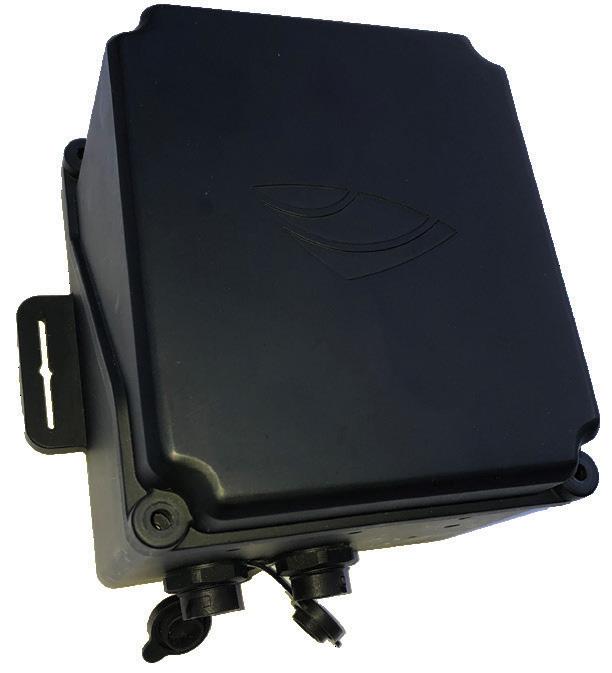

Single-phase 4-quadrant Class 1 energy meter
HV ConductorDown safety alert Three-phase 4-quadrant energy meter Management means measurement plus control
PowerPilot provides the platform to enable the full use of smart technologies with:
• Bushfire mitigation with ConductorDown technology
• RCD remote monitoring
• Power quality measurement in a Class 1 metre
• Safety features including loop impedance, open phase and other fault monitoring
• Prepare for disruptive technologies such as EV and PV
• All delivered via secure communications infrastructure
• Multiple other safety and network management features
• Designed and built by a power utility, for power utilities
Western Australia has announced a new solution to increase network reliability and enable the future growth of rooftop solar panels.
The energy collectively generated by residential solar panels in the South West Interconnected System (SWIS) is more than the amount generated by Western Australia’s largest power station.
This unmanaged energy puts residential power supply at risk on mild sunny days when rooftop solar generation is high and demand from the system is low.
As of February 14 2022, new or upgraded solar panels will be installed with the capability to be remotely turned off, for short periods, when demand for electricity reaches a critically low level.
Remotely switching off solar panels will be used as a last resort to prevent
widespread power interruptions and is expected to occur a few times a year for a few hours. This won’t affect the resident’s power supply.
Power stations will be turned down first, with rooftop residential solar the last to be impacted.
The measure, which will not affect homes with existing solar panels, will allow the continued uptake of solar panels without increasing costs.
The Australian Energy Market Operator (AEMO) welcomed the announcement, which supports its priority recommendation in the Renewables Integration Paper –SWIS Update, to help manage power system security and reliability during emergency operational conditions to be used as a measure of last resort to prevent widespread power interruptions.
Total renewable generation is meeting up to 70 per cent of total energy demand
The Victorian Government has announced more than $7 million in funding for renewable hydrogen trials and studies, aiming to grow the sector and reduce emissions.
Victorian Minister for Energy, Environment and Climate Change, Lily D’Ambrosio, announced recipients of grants whose projects will support the development of Victoria’s renewable hydrogen sector.
“Renewable hydrogen is a key part of our clean energy transition, ensuring we can meet our target of halving emissions by 2030 and hit net zero by 2050,” Ms D’Ambrosio said.
“These exciting projects will help businesses push the frontiers of renewable hydrogen and embrace this clean energy solution.”
$6.6 million is being provided through the Renewable Hydrogen Commercialisation Pathways Fund to support six projects that will see Victoria
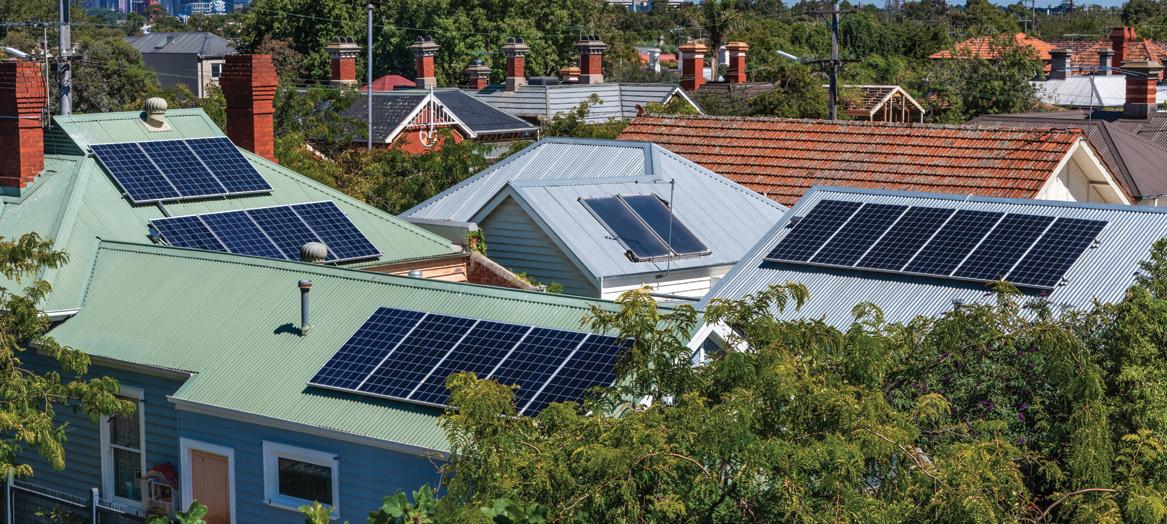
in the SWIS, 64 per cent by rooftop solar, in particular time intervals.
AEMO expects this to continue growing with installed rooftop solar capacity to virtually double in the next decade.
During daylight hours, with clear sky conditions, rooftop solar is the largest single generator in the SWIS.
AEMO Executive General Manager in Western Australia, Cameron Parrotte, said, “It is important to note that this measure is to be used as a backstop capability only.
“AEMO has access to a range of tools to help us forecast future system conditions and manage challenging operational conditions, such as low load events.
“These include reducing large-scale generation, procuring additional essential system services to ensure the system can be operated at a lower load level and coordinating with Western Power to manage voltages on the network.”
produce and use renewable hydrogen in real-world applications.
Volgren Australia will develop two commercial-grade hydrogen fuel cell electric buses for trials in Dandenong, while Viva Energy will develop a hydrogen refuelling station to co-locate with EV charging in a public New Energies service station.
Air Liquide and Energys Australia will develop renewable hydrogen production facilities for transport, while Boundary Power will develop an Australian-first, solar-renewable hydrogen standalone power system.
The Boundary Power system will convert solar power into hydrogen, and use that hydrogen to generate electricity during power outages or in remote areas that are not served by the grid.
Telstra received funding to deploy a renewable hydrogen fuel cell generator at regional mobile communication sites, to strengthen the grid and remove reliance on fossil fuels generators.

More than $800,000 will be shared by eight recipients through the Renewable Hydrogen Business Ready Fund to develop business cases or feasibility studies to support their transition to renewable hydrogen.
The grants are being delivered as part of the Victorian Renewable Hydrogen Industry Development Plan – which was launched in February 2021 to foster a thriving renewable hydrogen economy in Victoria.
Victoria’s renewable hydrogen sector aims to create long-term jobs through skills development and new career pathways, driving innovation and reducing greenhouse gas emissions across industrial, energy and transport sectors.












As leading multinational designers and manufacturers of innovative power transmission products, the brands of Altra Motion offer many critical drivetrain solutions for a wide range of renewable energy applications.


Service Support by Trained Technicians

Specialist Tooling for Maintenance
Genuine OEM Spare Parts
Local Spares Stocking Program










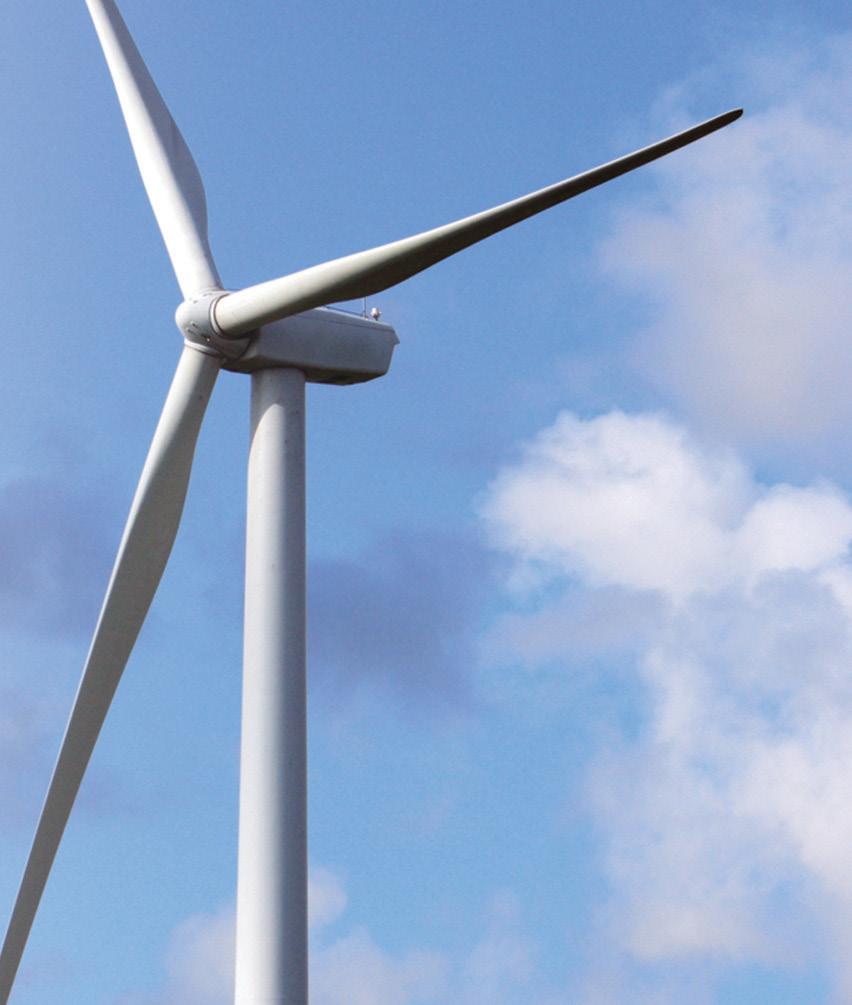


















Australia’s energy industry, like much of the world, is on a journey to cleaner, more reliable and more sustainable power – colloquially dubbed as ‘the transition’. The ongoing challenge dominates the conversation in the industry, and in state and federal politics. But, it’s not simply an industry or a political issue, nor is it solely an environmental or economical issue. As Secretary General and CEO of the World Energy Council, Dr Angela Wilkinson, would put it – it’s a human issue.
The World Energy Council, formed in 1923, is a network of the world’s principal independent and impartial energy leaders. The council acts as the leading global energy body, with over 3,000 member organisations spanning 90 countries.
The purpose of the council is to inform energy strategies across the world through high-level events, including the World Energy Congress, and publishing authoritative reports to inform energy policy dialogue.
One such report is the 2022 World Issues Monitor: Energy in uproar – achieving commitments through community action, which outlines the critical uncertainties and priorities of actions as identified by 2,200 surveyed energy policymakers, CEOs, and leading experts.
For Dr Wilkinson, the World Energy Council represents an ‘energy ecosystem’, comprising all forms of fuel sources, politics and technologies – embodying independence and neutrality.
Dr Wilkinson explained that the energy leadership landscape is becoming increasingly crowded, competitive and conflictual – and that with this comes the risk of extreme polarisation, an unhelpful outcome for any modern energy society.
A big component of this potential polarisation is the language that’s used in the energy dialogue, and how technocratic vernacular can be a barrier to including consumers in the conversation.
“I think the energy industry does itself a disfavour – it's never been very good at communicating,” Dr Wilkinson said.
“Fundamentally, our society's relationship with energy is changing, and as that relationship changes, so does our relationship with each other. And we're talking about achieving a global energy transition in a faster time than ever before in human history, and in a way which is successfully managed,” Dr Wilkinson said.
“Often, when you get into conversations around energy, most people don't know where they use energy, how they use energy, how much it costs them to use it, how much this transition costs, or what their role is in it.
Secretary General and CEO of the World Energy Council, Dr Angela Wilkinson

In the World Energy Council’s World Energy Trilemma Index 2021, Dr Wilkinson stated that energy agendas were in need of a serious priority check, “Some advocates wrangle over the colour of new fuel types, whilst billions of people have no connection to electricity, or lack access to quality energy for clean cooking, better health, and new livelihoods. Some voices are powerful, yet many remain literally power-less.”
“Fundamentally, our society's relationship with energy is changing, and as that relationship changes, so does our relationship with each other.”
“Our mission is to secure the benefits of sustainable energy for everybody,” Dr Wilkinson said. “So, more sustainable energy, climate neutrality and social justice.”
It’s an extensive scope of works, but within it is a particular and rather personal focus.
“Our current vision is humanising energy, because we need to involve more people and communities in delivering a successful global energy transition.”
Part of the ‘humanising energy’ strategy is ensuring ‘energy literacy’ is as ubiquitous as possible. Like digital or financial literacy, Dr Wilkinson believes that energy literacy is essential to flourishing societies. Language makes up a big part of that, but it’s not solely a communications issue – especially when it comes to the global energy transition, the impacts of which are felt everywhere, not just within the industry.
“There are large parts of society that are totally unprepared for the real choices and the depth of change that's involved. We're never going to achieve success unless we involve them, unless we equip them, unless we help them articulate their role and their story in the energy transition.”
Dr Wilkinson asserts that, in addition to energy affordability, sustainability and climate neutrality, it’s imperative that we factor in social justice to the overall transition equation. A stark reminder of this was the energy transition from coal to gas in the UK in the 1980s, which left a lot of community members stranded.
“It left a lot of people out of jobs, and we carry those political scars today,” Dr Wilkinson said.
The abrupt closure of coal mines in the UK was followed by rioting and mass unemployment levels and, subsequently, severe political disenfranchisement in mining communities. Dr Wilkinson said there are lots of similarities between those UK mining communities, and those in the US and Australia, and therefore the learnings can be carried over in terms of creating smoother energy transitions – ones that don’t leave communities in the cold.
Aberdeen, a city in north-east Scotland, is, like much of the world, embarking on a journey to cleaner energy, but it’s not easy – especially with its roots firmly planted in oil and gas.
“If you think about Aberdeen, you think about the gateway to the north sea in oil and gas production terms,” Dr Wilkinson said.
“Their identity as a city is wedded to oil and gas. So, how can we help them involve citizens in thinking about the choices they face and in rebuilding Aberdeen’s identity as a world energy city that is successfully managing its energy transition?”
There’s no magic recipe, according to Dr Wilkinson, but the important part is to include the humanisation element into conversations and decision-making. For each community, the ways in which they find their way through this transition and how they facilitate workforce transition and skills diversification will be unique. That’s why the community needs to be “at the table” when it comes to solutions dialogue, to be a part of that process.
A vision and prospectus report published by the Aberdeen City Council, A climatepositive city at the heart of the global energy transition, outlines the importance of community in redefining the city’s progressive role in the energy world.
The report states, “Moving to a future of net zero carbon emissions and beyond, whilst ensuring that everyone can prosper, regardless of status or income, is often
termed a ‘just transition’ and should be a key guiding principle for Aberdeen. So, at the same time as helping to catalyse the global energy transition, we need to realise shared opportunity and prosperity for all of our local people and communities by embedding just transition principles at the heart of every climate action we bring forward.”
How does Australia’s energy stack up against the rest of the world?
The World Energy Trilemma Index was designed as the first energy policy decision-support tool, creating a critical integrated policy framework which could aid in the development of sustainable energy systems. The World Energy Trilemma Index enables the design of new energy realities and policy design challenges through retrospective analysis via three lenses: energy security, energy equity and affordability, and environmental sustainability.
In 2021, Australia ranked 18th in the World Energy Trilemma Index, with the top three spots going to Sweden, Switzerland and Denmark, respectively. Australia received an overall trilemma score of 74.61 Australia’s score breakdown goes as follows:

Australia’s ranking on the World Energy Trilemma Index, based on security, equity and sustainability. Source: World Energy Council
Energy Security score: 64.4 / 100 (‘A’ rating)
The report states, “While Energy Security is rated A relative to the rest of the world, the score itself of 64 is low in absolute terms”. This can be attributed to a lack of diversity in generation and storage, however, the generation mix is changing with battery, pumped hydro and gas storage set as focus areas for federal and state governments.
Energy Equity score: 96.1 / 100 (‘A’ rating)
Australia achieved one of the strongest Energy Equity scores, driven largely by a focus on reliability, access and affordability.
“Affordability in particular is a key focus for the government, given the changing energy mix, uncertainty over fossil fuel prices and enormous geographic scale of the energy system,” the report states.
Environmental Sustainability score: 62.4 / 100 (‘C’ rating)
Australia demonstrated poor performance in terms of Environmental Sustainability, specifically with a substandard penetration of renewables and CO2 emissions per capita.
“The Federal Government has been seen to be relatively skeptical of climate change historically, and strong support still remains for the fossil fuel industry,” the report states.
Overall findings
The 2021 trilemma scores recorded for Australia showed little change in the three dimensions from the past year, indicating that Australia was relatively unaffected by the COVID-19 pandemic, and has almost no reliance on energy imports.
However, Australia’s ranking does not reflect its potential, according to the report, “Given Australia’s strong macro-economic and development fundamentals, wide-scale solar and wind resources, plus insulation from COVID-19, one might expect a global ranking of higher than 18.
Sweden – a consistently high-ranking country on the World Energy Trilemma Index – demonstrates a strong emphasis on equality and social security. The report states, “Swedish energy policy is governed by the triangle of sustainability, affordability and energy security. The Trilemma score reflects the importance of equity well.”
As well as performance, the World Energy Trilemma Index also measures improvement – illustrating the significance of improving access and diversifying energy systems. The overall top three improving countries since 2000 were Cambodia, Myanmar and the Dominican Republic, which may have low overall ranks but have demonstrated noteworthy efforts to improve their energy systems.

The World Energy Council recently published its 13th iteration of the World Energy Issues Monitor, representing the largest survey of its kind of senior energy professionals, governments and civil society. The World Issues Monitor Survey was undertaken promptly after the COP26 held in November 2021.
The World Issues Monitor Survey questionnaire considered 25 core energy transition issues, with the following emerging as the top concerns:
» Economic growth
» Commodity price volatility
» Geopolitical uncertainty
“This year's edition of our World Energy Issues Monitor reflects increasing global uncertainty about the collective ability to manage a steady global energy transition, as rising energy costs and fragile geopolitics shift leaders’ focus away from meeting demand for more sustainable energy and addressing climate change,” Dr Wilkinson said.
“Leadership uncertainty reflects the complex challenges of coordinating actions on net zero energy uses, without triggering new threats to regional and global stability.”
The World Issues Monitor indicates that, despite a certain level of optimism coming out of COP26, climate change was eclipsed by the concern from rising energy costs, and didn’t make it to the top of leaders’ list of critical uncertainties.
Renewable energies were defined as action priority, while hydrogen remains to be viewed with a high degree of uncertainty across most regions as leaders explore how to build a functioning hydrogen economy.
Amidst all the mounting uncertainty, the World Issues Monitor also reported a significant focus on issues affecting equity, with quality energy access featuring as an action priority for the first time, across all regions.
“This suggests that global leaders recognise the need to humanise the energy transition by building equity and resilience,
and ensuring reliable, affordable and safe energy supply for all,” the report states.
In Australia, there’s a plethora of opportunities to humanise our energy system, according to Dr Wilkinson.
“There's a lot going on in Australia around innovation, around hydrogen, around batteries, around different choices and options. And now it's about really activating this community-led system change at every level of society.”
As for the rest of the global energy industry and the ongoing transition to net zero? The answer remains much the same.
“Humanising energy is our imperative,” Dr Wilkinson said.
“The world cannot wait for full consensus, nor for intelligent machines to deliver the answer. The next big thing in energy is not a moon-shot technology but thousands of smaller steps that mobilise sufficient critical mass and accelerate human-centric know-how in securing quality energy access for all.”

With a new year comes new trends, and with the energy transition continuing to accelerate, there are some key developments to keep an eye on. Whether you’re an investor or a consumer, get ready to see the energy market and the technologies that drive it become smarter and more affordable. AGL Chief Customer Officer, Christine Corbett shares her views on some of the big trends the energy market can expect to see in 2022.

It seems every week a new electric vehicle (EV) model is being released by car manufacturers as the demand for electric vehicles intensifies. Billboards and TV advertisements are no longer targeting the 2X2 Ute, but rather the ease and power a driver could have with an EV.
While adoption in Australia has been slower than in other countries, the momentum and demand is increasing, and I expect this trend will continue to grow in 2022.
Charging infrastructure is also becoming more accessible and, importantly, more affordable, as are the EVs themselves – making it a more achievable option for many consumers.
While pricing isn’t matching that of petrol-fueled cars yet, I believe the next five years will see a real transformation in what vehicles we drive, and how we drive them.
Benefits can be even greater too when coupled with solar and battery technologies in the home or business, further driving emissions reductions and supporting Australia in meeting its long-term commitments.
At AGL, we want to be the power behind what is driving Australians, connecting them to a sustainable future and supporting their transition. Our EV subscription trial has continued to expand across the country, providing consumers with the opportunity to experience life behind the wheel of an electric vehicle, without the commitment of ownership.
As more EVs hit the open road, the big test for industry and governments will be focusing on initiatives that facilitate consumer access and develop technical insights to inform regulatory design.
By doing so, EVs will play an important role in achieving the energy transition, providing new job opportunities and seeing more Australians driving their way to a more sustainable future.
The last couple of years have, quite literally, kept us grounded at home, and we’ve soon come to realise that as much as they are places of rest and relaxation, they are also places where we tend to consume the most energy. They require heating and cooling, they pump out the hot water, and they are filled with seemingly endless electrical appliances like microwaves, refrigerators, and kettles.
In the midst of the energy transition, households are becoming increasingly empowered to be part of our journey to a lower emissions future, resulting in more options to make changes to household energy consumption right from the palm of our hands –our smartphones.
Indeed, there are the smart devices that we have grown accustomed to – robotic vacuums, voice-controlled smart speakers and universal remote controls – but in 2022 I think we’ll see a lot more of these technologies applied to our larger white goods like air-conditioners, refrigerators and dishwashers.
Smart meters and monitors offer a promising strategy for reducing consumption, particularly when demand is at its peak. More and more energy retailers are offering programs for customers which notify them when demand for electricity is high, giving customers the choice to opt in or out of these ‘peak events’.
AGL’s Peak Energy Rewards program is one such system, and customers can be rewarded with credits if energy reduction targets are met. We believe that affordable, sustainable energy should be the reality for every customer.
Product and technology offerings need to evolve in line with our changing wants and needs and, importantly, offer solutions that are more efficient and affordable.
Storage is one thing we can never seem to have enough of, and that applies to the energy industry, too. As renewable energy sources continue to enter the market, batteries – both household and grid-scale – will play a critical role in stabilising the grid.
As demand for household solar continues to grow, so too does the demand for solar batteries. These batteries, when partnered with existing solar panels, store unused energy generated during the day to use at night, making the most of solar energy and now only leaving behind reduced energy costs.
When we view this technology at a much larger scope, grid-scale batteries are well-positioned to respond quickly and flexibly to the market and energy system’s needs. If we then add a combination of other renewable and firming technologies to the mix like gas, hydrogen, and pumped hydro, we have a strong ecosystem that I believe will eventually power all of Australia’s future energy needs.
With this concept in mind, AGL has developed an integrated, low carbon industrial energy hub strategy for our existing thermal generation sites, one that we have seen executed successfully overseas. As the first unit closure of Liddell fast approaches and its 250MW grid-scale battery receives development approval, we are very much looking forward to this milestone to pave the way for our future transition and rehabilitation projects.
Businesses know they can’t offset their way to carbon neutrality without additional compensation measures. Every business, big or small, must reduce its emissions and improve its business practices first and foremost, but once that has been addressed offsets can be used to fill the gaps and assist businesses to reach carbon neutrality.
Internationally and here in Australia, we are seeing offset markets becoming more sophisticated and a number of accepted and refined methodologies are being developed. This, combined with the increasing demand for offsets, has resulted in the offset market becoming one of the fastest-growing sectors in the world.
Australian carbon credits regulated by the Clean Energy Regulator are seen as a high-quality offset that is appreciating in value. Over the course
of 2021, the market saw an increase of over 200 per cent in ACCU spot price, and many analysts are predicting this will rise further in the coming years.
Landholders have enormous potential to capitalise on this market, particularly indigenous organisations who can generate credits through practices like savanna burning on cultural lands. Looking after country now has the added opportunity of providing economic development for their communities while also meeting Australia’s environmental commitments.
We know that creating a low carbon future is important to the businesses that we work with, and through innovation and agility, we are able to develop integrated energy solutions to meet their decarbonisation goals, as well as ours at AGL.
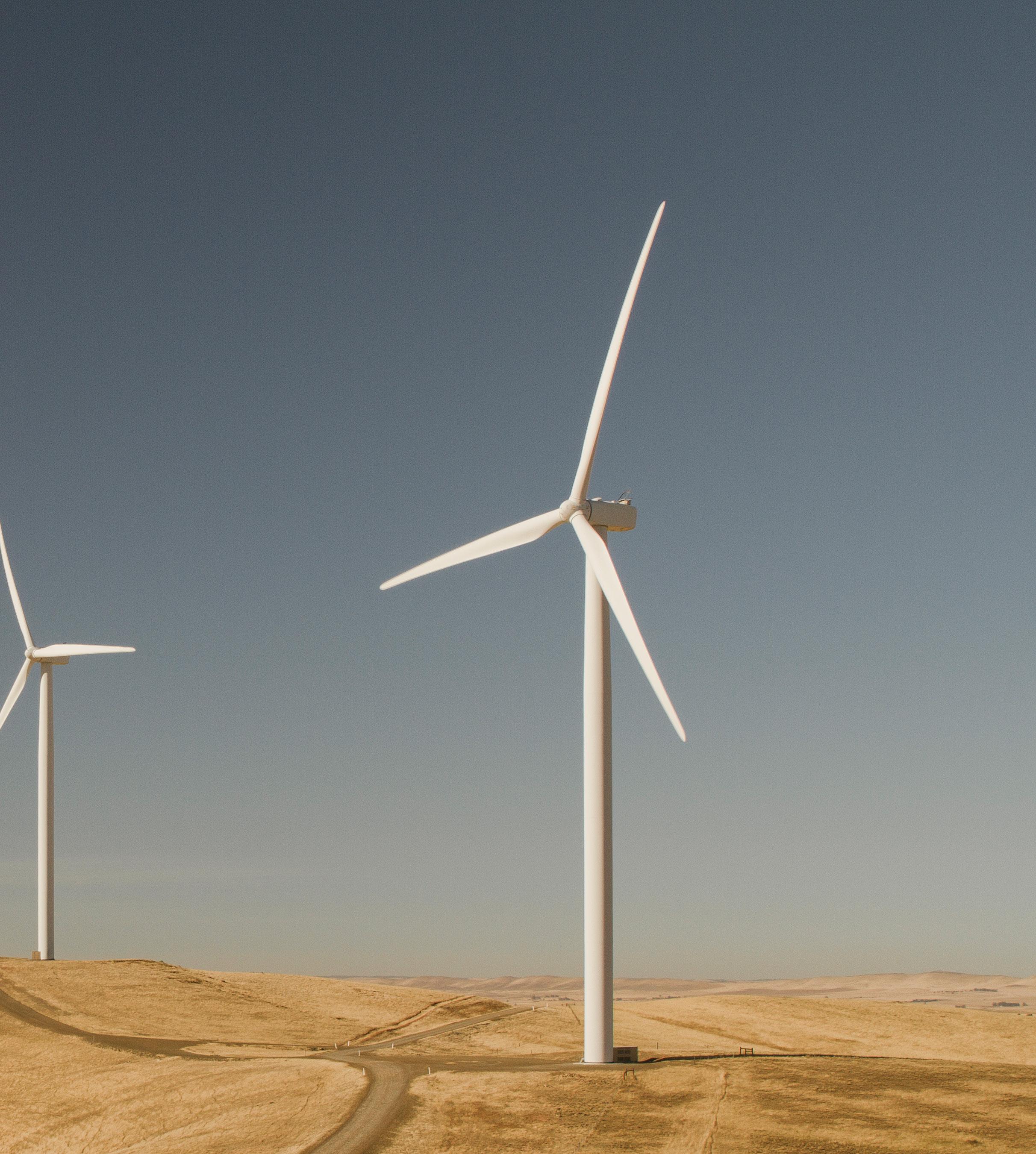
5. Discussions on market design
I always encourage healthy discussion, whether it be with my family at the dinner table, in meetings at the workplace, or over lunch with friends. Discussion brings about fresh ideas and opinions that we may otherwise not have thought of, generally leading to a more efficient, all-encompassing solution.
The transition sees the energy industry evolving at a rapid pace and I anticipate that in the coming months there will be increased discussion and collaboration between government and key stakeholders on the structure of the National Electricity Market (NEM). As renewable technologies and developments continue to enter the market, the NEM needs to evolve into a modern energy system that remains fit to meet the needs of consumers. This may mean a change in reforms that will help to maintain grid security and reliability, and provide certainty for future investment. As we see this progress, it’s critical that the government and key stakeholders, such as large energy companies like AGL, work together to ensure a reliable and affordable energy transition. We know energy, and AGL has been actively involved in the NEM 2025 consultations and we look forward to further discussion this year.
Treating electric vehicles as ‘batteries on wheels’, an innovative new technology has the potential to play a key role in Australia's renewable energy and net zero emissions strategies, while letting electric vehicle (EV) owners make the most of their investment.

With Australia leading the world in the number of rooftop solar panels per capita, many households are already evaluating the benefits of an in-home battery for storing excess solar power. As EVs become more common, owners and grid operators will also be able to take full advantage of the battery sitting in the driveway.
Through iMOVE Cooperative Research Centre (iMOVE), The University of Queensland (UQ) has launched an international trial to determine whether the spare battery capacity in EVs could be used to drive the uptake of renewable energy, power homes and support the grid.
The 'Electric vehicles: Supporting uptake, investigating smart charging' project focuses on studying how EV owners currently use and charge their vehicles. It aims to understand how EV adoption could be accelerated, by examining consumer willingness to purchase EVs and participate in smart charging programs.
As with in-home batteries, in-vehicle batteries can be bi-directional – used to store excess solar power and then provide it back to the home when needed – known as Vehicle-to-Home (V2H).
Using EV batteries to power homes in the evenings, rather than drawing expensive peak electricity from the grid, allows households to both reduce power bills and the peak load on the energy network. If required, vehicles can recharge from the grid late at night, when off-peak
electricity is cheaper, to ensure they have enough charge for the next day's driving.
Just like in-home batteries, the excess power stored in EVs can also be offered back to the energy provider, a fledgling concept known as Vehicle-to-Grid (V2G).
Treating networks of EVs as virtual power plants adds capacity to the grid, manages EV charging, and allows for better utilisation of distributed energy and assets. This can lower infrastructure costs and better manage peak demand, to help providers bring down energy costs.
EVs can also be utilised to store excess grid power during the day to combat voltage fluctuations and other power quality issues, which can force home solar systems to reduce their output on sunny days when too much energy is being fed back into the grid.
While there is a range of technical and infrastructure challenges to overcome, V2G has the potential to make a significant contribution to Australia's energy needs. It can also play a key role in assisting the transport sector in reaching net zero carbon emissions by 2050.
One of the key challenges with implementing a national V2G strategy is understanding whether EV owners are ready and willing to surrender control over how and when their vehicle charges.
In this project, UQ has partnered with EV analytics platform Teslascope to address these questions. The study is recruiting Tesla owners internationally to better understand driving and charging behaviour across the globe.
iMOVE Managing Director, Ian Christensen, said for electricity to be a good candidate for replacing fossil fuels, there needs to be increasing engagement between the transport and energy sectors.
"iMOVE stands ready to assist industry participants to engage with this question of what technology they are going to utilise in order to become more sustainable into the future," Mr Christensen said.
"We're not advocates of any particular solution, except we would observe that the transport sector will need a range of solutions to curb its carbon emissions because there's no one solution that will satisfy all the transport requirements."
While many new EVs coming to market offer a driving range of more than 400km, most private vehicles are driven less than 50km a day. E-Mobility Research Fellow at UQ and Head of Policy, Electric Vehicle Council, Dr Jake Whitehead said, in theory, if all of Australia's 16 million cars were EVs with a modest driving range, they could store enough energy to power the entire country for 24 hours.
"I'm not suggesting the entire country will be solely powered by electric vehicles, but the potential storage capacity offered by an orchestrated V2G program illustrates that it could have an important role to play in soaking up excess renewable energy and providing it back to the grid during peak demand," Dr Whitehead said.
"The excess energy capacity in EVs presents an incredibly valuable resource, but only if EV owners are willing and able to share it, and are properly compensated for doing so."
The study offers a unique opportunity to better understand EV driving and charging behaviour in different markets, Dr Whitehead said, as well as the opportunities for EVs to provide energy services and generate extra income for owners.
It will initially involve up to 500 Tesla owners, and use Teslascope’s analytics platform to collect vehicle usage data. In exchange for secure and confidential access to their usage data, participants are provided with a free 12-month premium Teslascope subscription.
The study is initially limited to Tesla owners in Australia, North America and Europe. As more manufacturers open up access to vehicle data, future studies will be able to consider expanding to include other EV brands.
"With the support and trust of users, we will be able to leverage these learnings to influence government policy – including the rollout of public charging infrastructure," Dr Whitehead said.
"We also aim to use the findings of this research to address some of the common misconceptions around how EV owners use their vehicles and highlight how this technology provides far greater benefits than risks to the energy sector."
UQ PhD student Thara Philip said for initiatives like V2G to succeed, it is important to understand the current behaviour and attitudes of EV owners, to see whether they are well-aligned with the requirements of V2G or present additional barriers.
"Range anxiety" is a recurring theme in Australia's EV debate, with a concern that vehicles could run out of charge during a long journey. This can make EV owners apprehensive about participating in V2G
networks and handing control of their vehicle's charging to the grid operator.
"We need to address the question of what's required to ease range anxiety," Ms Philip said.
"EV owners might be prepared to let their electricity provider choose when to charge and discharge their vehicle, if the owner could be assured that in the morning they'd always have a minimum range of 150km, for example."
"There is also the potential impact of price signals on consumer behaviour, such as a larger economic return for participating in V2G, or paying a premium for overriding the smart charging controls and choosing to charge your vehicle from the grid during peak time."
Apart from consumer willingness, a wide range of challenges must be addressed throughout the EV ecosystem before widespread V2G adoption can become a reality. Support for V2G bi-directional charging plugs and standards from EV manufacturers, as well as in-home charging infrastructure, still varies widely. Grid connection agreements with energy providers also present further challenges.
Of the various EV charger plugs across the globe, only Japan's CHAdeMO standard currently supports V2G. While V2G support is on the roadmap for some of the other charging standards, Dr Whitehead said it could be five to ten years before it becomes commonplace in EVs, and the functionality will likely come at an additional cost.
A technical concern is the impact of the extra charge cycles on the lifespan of the battery. While smart algorithms can optimise charging to minimise the impact of extra usage, participating in V2G is not covered under current battery warranties from many EV manufacturers, including Tesla.

In theory, V2G should take a toll on battery life compared to an EV which was only used for transport, with perfectly optimised charge cycles, Dr Whitehead said.
"Yet, the reality is that most electric vehicles aren't charged perfectly in an optimised way," Dr Whitehead said.
"Studies have found that, compared to how the average person is actually charging an electric vehicle right now, participating in V2G and smart charging results in a pretty similar battery life.
"Behind the scenes, those smart charging algorithms make decisions which make good financial sense for EV owners."
While the benefits of V2G could help make EVs more affordable and drive takeup, the return on investment for EV owners is not yet clear, particularly when allowing for the cost of in-home bidirectional EV charging infrastructure.
Kristian Handberg, Head of Electric Mobility at Viva Energy and former Electric Vehicle Lead at AGL Energy, said, "Vehicleto-Grid is an evocative concept which has been around for a while.
"There are many reasons to embrace it but, from an economic standpoint, many homes may not justify the expense of both an in-home battery and the extra costs of supporting V2G with their electric vehicle.”
V2G is also hampered by the fact that related charging infrastructure is yet to be standardised, meaning EV owners can't be sure that their current charging equipment will be compatible with V2G in the future. Finalising grid connection agreements with energy providers, to export energy from EVs into the grid, also has a long way to go.
Mr Handberg said the payback time for V2G needs to be less than the average time people keep a new car, which is only three to five years. For now, the technology is still in its early stages and highly proprietary, meaning technology obsolescence remains a challenge to ROI.
"This means V2G will remain an early adopter solution for some time yet – at face value, people think it's an amazing idea, that stationary cars can be used to solve other problems – but the devil is in the detail," Mr Handberg said.
"As it becomes clearer where V2G makes sense, I can imagine bus depots and multistorey car parks becoming building blocks for our energy system."
“There’s no one way to solve our energy, transport and environment challenges,” Mr Christensen said.
“There are many, many pieces to the puzzle, and we need to keep pushing forward with our understanding – such as with this project.”

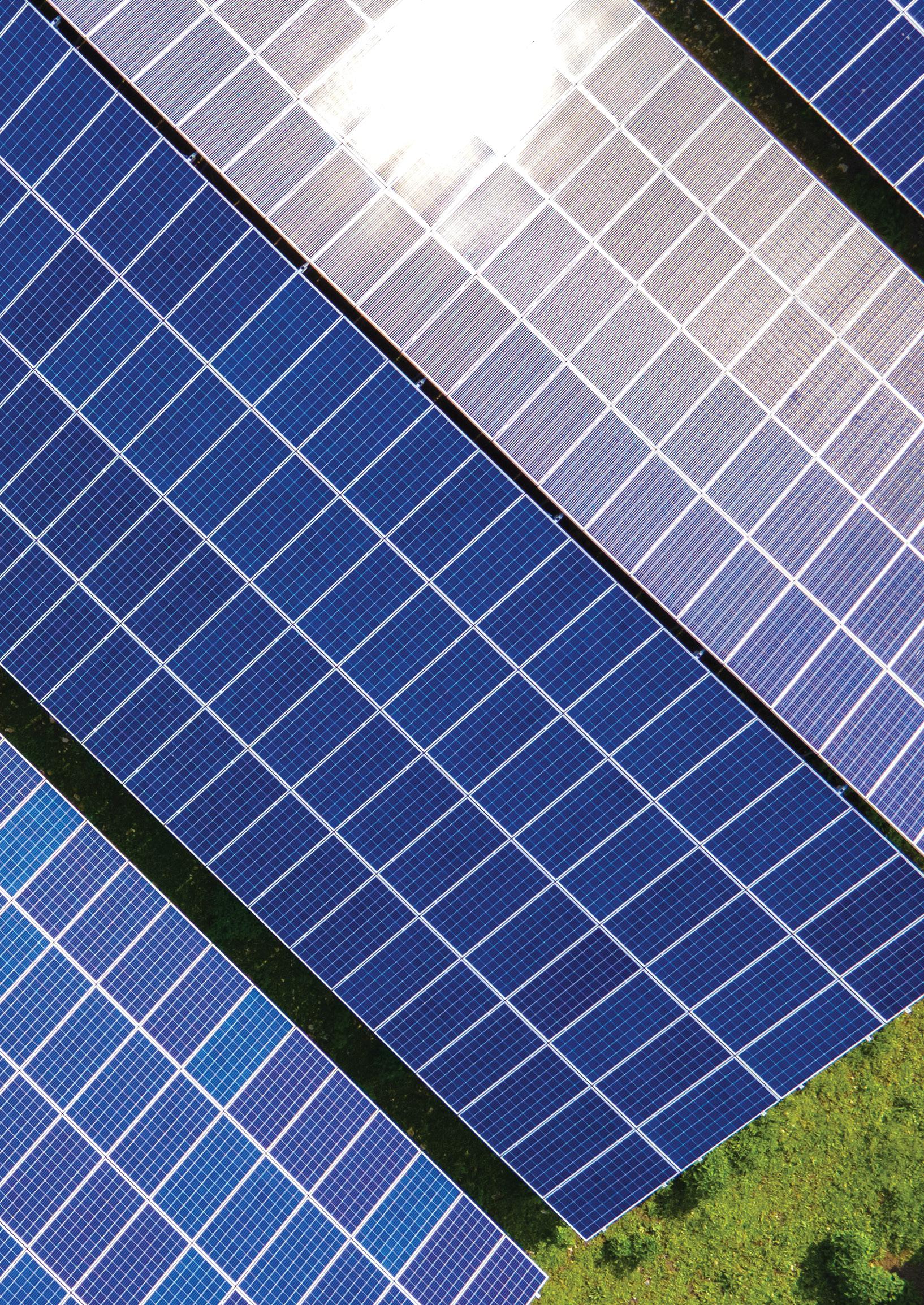 by Michelle Goldsmith, Contributing Editor, Energy magazine
by Michelle Goldsmith, Contributing Editor, Energy magazine
It’s official: Australia likes big batteries. The last few years have seen numerous new battery projects announced, existing projects completed, and new projects began. And there’s more to come. Independent energy consultancy Rystad predicts that Australia’s total utility-scale battery capacity will double over 2022, passing 1.1GW. The first part of this article provided an overview of battery energy storage systems (BESS) currently operating or under construction around the country. In this second installment, we look at some of the biggest batteries in the pipeline.

In the November 2021 edition of Energy, we looked at the big batteries already operating around Australia and those in various stages of construction. In the time since, the 300MW/450MWh Victorian Big Battery has come online, and commissioning has begun at the 50MW/75MWh Wallgrove Grid Battery in New South Wales. Additionally, ground has been broken on several new big battery projects.
Neoen has begun construction of the 100MW/200MWh Capital Battery project, located just north of Transgrid’s Queanbeyan substation. Due to the emerging market for battery services, the company decided to double the battery’s initially planned 50MW capacity. Of this larger capacity, 50MW was committed as part of the ACT Government’s 2020 renewable energy auction, with a further 50MW yet to be contracted. The battery will be linked to the ACT grid through the neighbouring substation. Neoen awarded Doosan the engineering, procurement and construction services contract for the project. The battery is expected to start operating in the first half of 2023.
In South Australia, work on the 250MW/250MWh Torrens Island grid-scale battery is underway. The battery, located at AGL’s Torrens Island gas facility, is the first of AGL’s planned 850MW of battery projects to break ground. AGL appointed Wärtsilä to construct the $180 million project. The storage duration of the big battery will initially be for one hour (250MWh), with space for future expansion of up to four hours (1,000MWh). The battery is expected to be fully operational by early 2023.
Kwinana Big Battery (100MW/200MWh), Western Australia
Synergy’s $155 million Kwinana Big Battery is under construction at the decommissioned Kwinana Power Station. NHOA Australia received the contract to deliver the 100MW/200MWh lithiumion battery system, and awarded a $50 million contract to

GenusPlus Group for engineering, procurement, construction and commissioning. The Western Australian Government provided $140 million for the project, with the Federal Government contributing $15 million. The battery is expected to come online by the end of 2022.
A 150MW/150MWh battery is under construction at the site of the former Hazelwood coal-fired power station in Victoria’s La Trobe Valley. The Hazelwood battery will utilise existing infrastructure at the site to connect to the Victorian grid. When complete, the $150 million installation will be Australia’s largest privately funded BESS. Engie has a 70 per cent ownership stake in the battery, and the remaining 30 per cent belongs to Macquarie’s Green Investment Group. The owners appointed Fluence to build, operate and maintain the BESS, under a 20-year contract. The battery is due for completion in November 2022.
In addition to those already under construction, a multitude of big battery projects are soon to begin or have been confirmed. With the market for grid-scale battery services expanding rapidly, an ever-increasing number of projects are being announced or progressing through various stages of planning. According to Rystad data, as of December 2021, around 28GW of utility-scale batteries were in the pipeline across Australia. Here we look at a selection of the largest confirmed battery projects so far.
Kurri Kurri Battery (1.2GW), New South Wales
In 2021, CEP Energy unveiled plans for a 1.2GW (1,200MW)
battery energy system at Kurri Kurri. CEP Energy has secured a lease on the site of the proposed project, which is approved for power generation. Construction is expected to begin this year, so the BESS can start operating in 2023.
Goyder Renewables Hub BESS (up to 900MW/1.8GWh), South Australia
Neoen has secured approval to build a battery of up to 900MW/1800MWh in Goyder South, as part of the $3 billion

Goyder South Renewables Zone project. The zone will also feature up to 1.2GW of wind energy, and 600MW of solar power generation. Work has already begun on the first stage of the project, which involves constructing a 412MW wind farm at the site.
Loy Yang Battery (200MW/800MWh), Victoria
AGL has received planning approval for a 200MW/800MWh battery at the Loy Yang Power Station in Victoria’s Latrobe Valley. This BESS is part of the company’s planned national rollout of 850MW of grid-scale batteries.
Eraring Battery (700MW/2.8GWh), New South Wales
Origin is progressing plans for a 700MW/2800MWh grid-scale battery at Eraring Power Station in New South Wales. The company has lodged a connection inquiry with TransGrid to connect the battery to the national grid via the Eraring substation. The full capacity of the BESS will be deployed over three stages, with the first expected to be reached by the end of 2022.
Gould Creek Battery (225MW/450MWh), South Australia
Maoneng has received development approval and is undertaking procurement for a 225MW/450MWh BESS adjacent to the Para transmission substation in Playford, South Australia. Construction is planned to begin in late 2022, with completion expected before the end of 2023.
Sunraysia Emporium BESS (100MW/200MWh), New South Wales
Maoneng has announced a 100MW/200MWh battery system, called Sunraysia Emporium, near Balranald in New South Wales. The battery is expected to be completed in 2022/2023.
Bouldercombe Battery (50MW/100MWh), Queensland
Genex is progressing plans to build a 50MW/100MWh battery on land adjacent to Powerlink's Bouldercombe substation in Queensland. The battery will comprise forty Tesla Megapacks and is expected to be operational by the end of 2023.
Big Canberra Battery Project (250MW), Australian Capital Territory
The ACT Government has announced plans to build 250MW of battery storage capacity and is in the process of shortlisting proposals. The total storage capacity will be made up of one or more batteries spread across the territory.

Massive proposals
In recent times, dozens of new battery storage projects have been proposed. These include multiple battery systems with massive storage capacities of over a gigawatt. Those that follow are just a few of the biggest proposed big batteries to date.
Australia-Asia PowerLink Battery (36–42 GWh), Northern Territory
In the Northern Territory, Sun Cable intends to build a 36–42GWh battery. The Australia-Asia PowerLink would be the world’s largest battery storage facility and solar farm. It is intended to supply Darwin, Singapore and Asian Markets. The project is expected to cost around $30 billion to construct, and to provide around $2 billion of energy exports per year. The first supply of electricity to Darwin is forecast for 2026, the first supply to Singapore in 2027, and full capacity by the end of 2028.
Photon Solar and Storage Battery (3.6GWh), South Australia
Dutch-based solar developer Photon Energy proposes to construct a 300MW solar generation facility, along with 3.6GWh of battery storage, in South Australia. Photon has secured land for the project and is progressing plans.
Melton Renewable Energy Hub BESS (600MW/2.4GWh), Victoria
Syncline Energy has released plans to build a 600MW/2400MWh BESS in Victoria. According to the proposal, the Melton Renewable Energy Hub will connect to the grid via AusNet’s Sydenham terminal station.
Among the many other large grid-scale battery projects proposed across Australia are the 500MW/1GWh Great Western and Wallerawang 9 batteries, and the 700MW/1.4GWh Waratah Super Battery, all in New South Wales; the 203MW/812MWh La Trobe Valley BESS in Victoria; and the Robertstown Solar Battery (250MW/1GWh) in South Australia. The rapid expansion of the energy storage arena, and a continued drive to decarbonise the economy and reach net-zero emissions, means one thing is for sure about Australia’s big battery future: more is yet to come.
Spanning the borders of north-east South Australia and south-west Queensland, it’s mostly red desert as far as the eye can see, but you will also find the Cooper and Eromanga Basins which house Australia’s largest onshore oil and gas field development operated by Santos. As businesses seek more sustainable ways to operate and decarbonise, Santos partnered with AGL to find a renewable way to power 12 remote oil well pump motors.
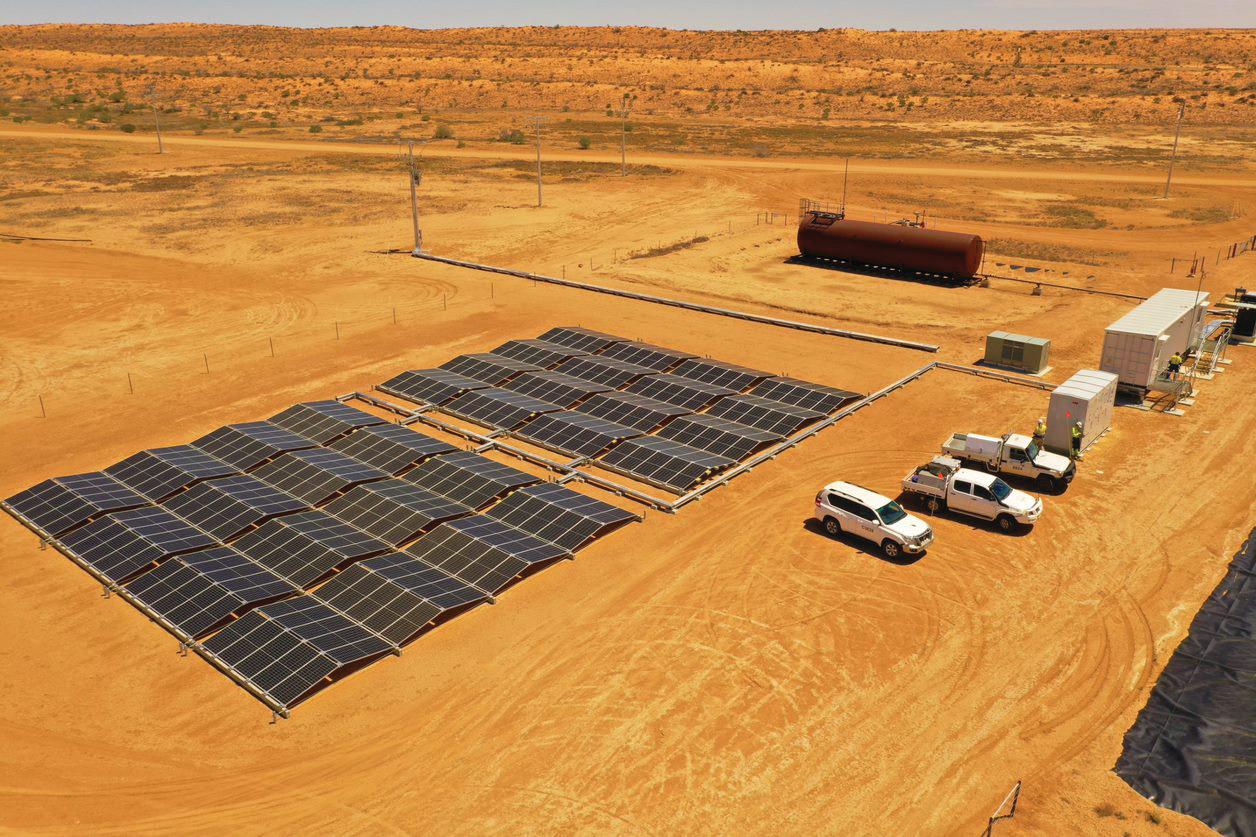
From working in an isolated location, to experiencing extreme weather events and managing an evolving pandemic, the project had unprecedented challenges, but AGL found the perfect solution through the development of a hybrid microgrid.
When AGL’s sustainable business energy solutions team began work on the project, one of the biggest challenges was creating a system that would perform in such a remote location. Deep in the South Australian desert, the Charo oil field is a three-hour drive from the company town of Moomba, which operates a small regional airport with limited incoming flights. For personnel travelling by road, Moomba is a minimum two-day drive from Adelaide. Once on-site, the vast and desolate environment of the Cooper Basin sinks in, with the area experiencing extreme heat with temperatures up to and in excess of 400C. But, AGL’s team was up for the unique challenge.
AGL’s Chief Customer Officer, Christine Corbett, has been with the organisation since 2019 and during this time has expanded AGL’s commitment to finding smarter sustainable solutions for customers. Stepping into her role with a customer-centric mindset, Ms Corbett has been an advocate for improving the experience of all AGL customers, big and small. Ms Corbett said in the early stages of the project, the team had to think outside the box to assess how they would be able to construct this micro-grid in such a remote location of Australia.
“For this project, our team was comprised of project managers and
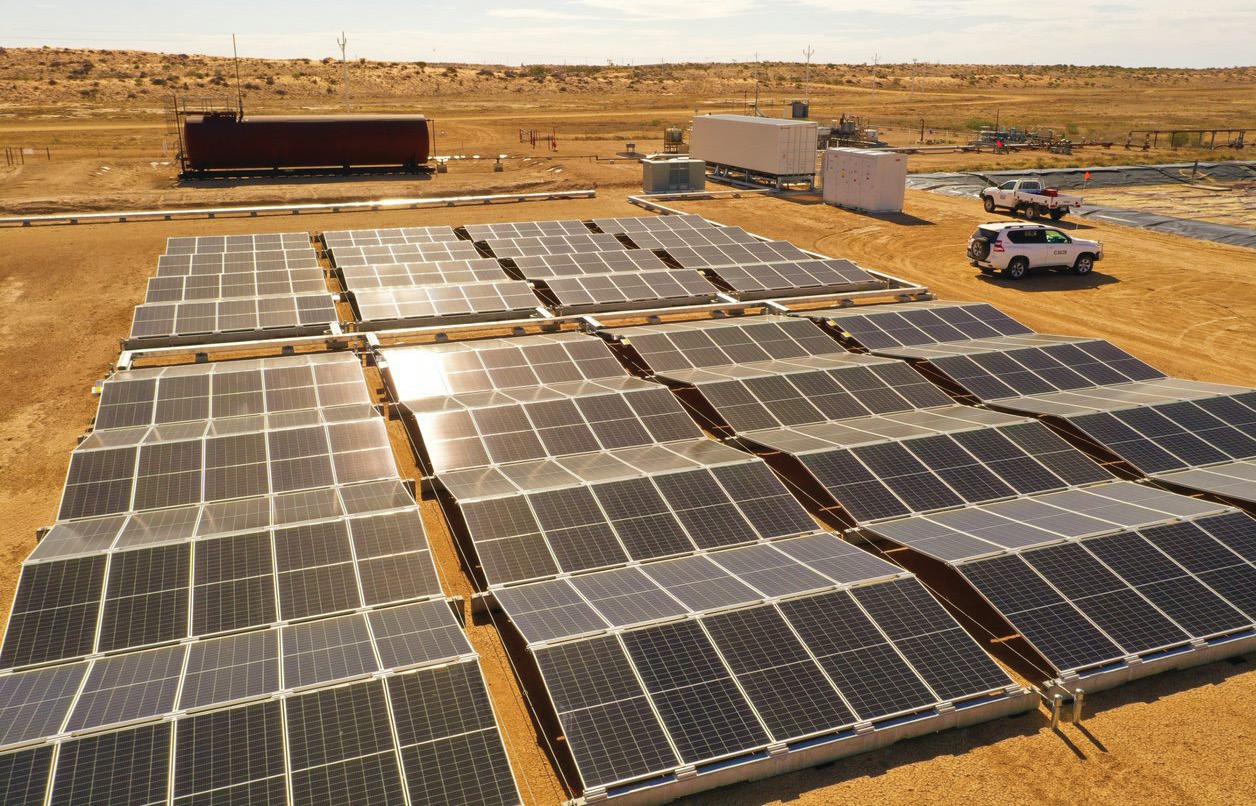
engineers who were experienced in working remotely and in harsh weather conditions,” Ms Corbett said.
“With a site only accessible by a challenging dirt road and in an area that can see extensive flooding, it was crucial we had the right people working together.”
Each worker on site was specialised in remote-area work for extended periods of time and working in demanding conditions that require psychological management, high safety precautions and preparedness for summer heat stress.
“Within an environment like the Cooper Basin, team members become teammates – looking out for each other and prioritising safety.” Ms Corbett said
The AGL team started the project with limited information on the current operations or historical power usage of the oil pump motors. This data is a crucial
piece to the puzzle in these projects, in order to understand how the motors were operating. To overcome this gap the AGL engineers model how the microgrid would operate once commissioned, using data loggers which allow the current operations to be examined.
“The sheer remoteness of the site, combined with obtaining granular data on its current power usage, was a challenging task,” Ms Corbett said.
As this data was gathered, reviews of the oil pump energy demands revealed the highly dynamic nature of the electrical loads that could fall to low levels and increase to high levels in the space of a few seconds. This potential rapid change provided AGL with the insight it needed to design and construct the optimal microgrid.
“From here the team was able to develop a sophisticated engineering solution by undertaking a series of studies to inform the system design and ensure

that the microgrid would be fit for purpose,” Ms Corbett said.
“We know that no two businesses or projects are the same, with varying needs and requirements from solar and energyefficient lighting to power factor corrections and operating solutions, and this project was one of the most unique the team has done to date.”
For this project, constructing a hybrid microgrid solution was the key to supplying power to a remote area that is largely unsupervised. With nearby well sites, it was advantageous to supply the sites from a single point via high voltage transmission. By using multiple power sources in the microgrid, the AGL team has prepared Santos for inclement weather events that have the potential to disrupt one power source, like cloud cover disrupting solar. Further, the supervisory control and data acquisition (SCADA) system was installed as part of the microgrid to assist in remote monitoring and control, reducing the potential need for site visits.
“The hybrid microgrid was an excellent solution for Santos and supported their goal to lower emissions and operating costs while continuing to support the powering of the oil well pump motors,” Ms Corbett said.
The microgrid consisted of a centralised solar PV system, a Battery Energy Storage System (BESS), and generators connected to motors via high-voltage power lines. The new system would improve efficiency, reduce maintenance time and fuel, while decarbonising by introducing renewable energy into the power generation.
Each facet of the microgrid complemented the other; gensets to provide baseload energy, the battery to manage load dynamics to help generators
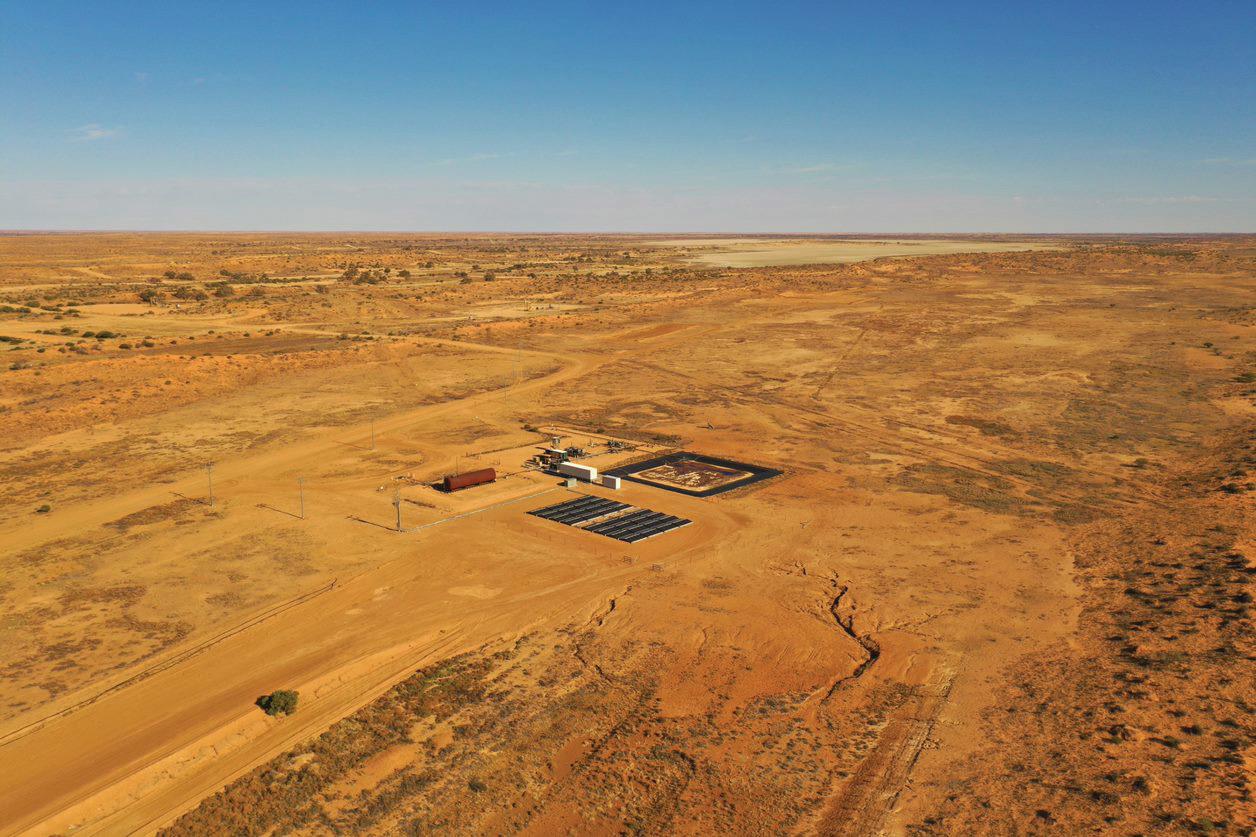
maintain fuel efficiency, the PV charges the battery during the day to reduce the load on the generators, a control system, and SCADA to ensure the effective management of site loads by dictating how and when the equipment operates.
The microgrid was also designed with a modern automatic control system that is capable of managing the dynamics of electrical loads, diagnosing faults, and optimising the system’s operations.
“More than 12,000 work hours later, the team had in place a distributed energy resource that will create an efficient and sustainable solution for Santos and a great example of what can be done for other energy-intensive businesses,” Ms Corbett said.
While there are other microgrids operating in Australia, this project is innovative, acting as a prototype microgrid

that is specialised for the dynamic welllease load requirements. As a unique and specialised solution, microgrids are not a one-size-fits-all concept, but rely on a design that manages elements and environmental factors specific to that project.
In this case, the remoteness of the Cooper Basin meant that AGL’s microgrid needed to have the capacity to manage loads throughout the day in extreme conditions. By ensuring the microgrid was capable of this, AGL has enabled Santos to maintain the production of its oil wells. Over time, the microgrid will be fine-tuned to meet potential climatic changes of the site and to sub-surface well-lease reservoir conditions. This process will allow AGL and Santos to collaboratively tweak the microgrid, potentially improving the system's performance.
“We are committed to using the latest technologies and innovations to create distributed energy resources which support big and small businesses,” Ms Corbett said.
“Our work with Santos has extended over four years with 55 completed projects in the Cooper Basin, providing them with energy solutions to further their business and improving both the commercial performance and environmental impact of its operations.
“This work has helped Santos shift to sustainable energy sources, utilising battery energy storage systems and ground-mount solar PV systems integrated with Santos' existing gensets.
“As the largest ASX investor in renewables we are committed to helping all businesses reach their decarbonisation goals while ensuring their operations remain viable and affordable well into the future.”



your leading source of news for the local government sector
Council has been developed to keep you up-to-date with all of the latest news, discussions, innovation and projects in the local government sector.


Council is fully integrated across print and online, featuring a website updated daily with the latest industry news, a weekly e-newsletter delivered direct to your inbox, and a quarterly magazine that can be read in print and online.
Published by industry publishing experts Monkey Media, Council will arm community decision-makers with the critical information they need to deliver a better future for cities, towns and suburbs all over Australia.




HEAD TO THE WEBSITE TODAY to sign up for the FREE WEEKLY NEWSLETTER!


www.councilmagazine.com.au
info@councilmagazine.com.au




 by Dawson Johns, Managing Director, Zenaji
by Dawson Johns, Managing Director, Zenaji

There are many claims in the industry about lower-cost batteries in the future. However, the laws of supply and demand continue to prevail, with demand continuing to outstrip supply. Battery prices ultimately reflect this.



very major manufacturer of cars worldwide is moving to an electric vehicle range in the belief that this will reduce carbon footprints but also put increasing pressure on prices. Rare earth metals are in great demand in the manufacturing of many batteries. The base costs of metal are rising and with increasing demand comes the inevitable price increases.
India is likely to produce 30 per cent of the world’s lithium batteries in the next decade. One report (PRAXIS 2021) predicts battery prices are likely to drop 6 per cent per annum till 2030 to below $100 US per kWh. However, given the cost of batteries today is close to material cost, exactly why this is a likely scenario appears to be based on a series of assumptions rather than anything else.
Below is an overview of two of the potential technologies emerging in the battery world which show promise.
Operating through a chemical process known as 'reversible rusting', these batteries take in oxygen when discharging, which then causes a reaction with iron to produce rust. An electrical current then converts that rust back into iron during the charging process, releasing oxygen from the battery releases.
This appears to be a low-cost solution but less commercially viable. This process is inefficient and losses of energy will be high, meaning that for each kW of energy earned only a fraction of that energy will become available to the user. Safety issues are a major concern as these batteries can overheat, cause fire, or explode if damaged.

These batteries are currently being developed in laboratories and are a new development that could allow for much greater energy storage capacity than a typical Lithium battery. These batteries would literally 'breathe' air by using free oxygen to oxidise the anode. The technology has been described as “promising” but like practically all new technologies there are a number of technological issues yet to be resolved. One of these is the quick build-up of performance, including a quick build-up of performancedecreasing by-products and the resulting problem of 'sudden death', where the battery ceases to work without warning.
Zenaji continues to assess the latest in battery technology from around the world and is yet to find a better technology to replace Lithium Titanate (LTO) as the best solution available for long-term stationary storage. This is because of LTOs many benefits including energy density, safety, longevity, cycle life, temperature tolerance, efficiency, and lifetime cost.
Zenaji manufactures the world’s safest, infinitely scalable batteries with its Aeon (2kWh) and Eternity (32kWh) LTOs. Zenaji offers the world’s longest warranty at 22,000 cycles per battery.
Find Zenaji batteries at R&J Batteries Australia-wide. Visit zenaji.com or rjbatt.com.au for more information.
Zenaji Aeon Lithium Titanate (LTO) Batteries provide safe, costeffective power. Making them your lifetime energy storage solution.

• Infinitely Scalable
• Economic Lifetime Cost
• 20 Year or 22,000 Cycle Warranty
• Superior Performance
• Smart, Easily Mountable Design
• Domestic, Commercial & Off-Grid Installations
Available from R&J Batteries branches and distributors across Australia. Ask our battery experts for more information on Zenaji Batteries
Melbourne’s iconic CBD bathed in sunlight is quite a spectacular view — but now the city’s sun-soaked skyline can offer more than just a killer Instagram photo. New research from Monash University has unveiled the massive potential of solar photovoltaics (PV) integration in transforming Melbourne into a near-self-sustaining city.
Cities suck up huge amounts of energy, but produce very little themselves.
New research from Monash University has revealed a massive opportunity for Melbourne, and cities like it, to shift this balance.
The study, first published in the journal Solar Energy, found that integrating solar technology in roofs, walls and windows could account for up to 74 per cent of Melbourne’s electricity supply.
The bulk of that solar energy supply (88 per cent) could be produced through rooftop solar alone.
Wall-integrated and window-integrated solar technologies, which could be used to capture solar radiation bouncing off of city skyscrapers, could produce 8 per cent and 4 per cent of that supply, respectively.
Researchers from the ARC Centre of Excellence in Exciton Science based at Monash University worked with collaborators at the University of Lisbon to chart the amount of sunlight that reaches the city annually, taking into account shadows from taller buildings.
By mapping the solar radiation, researchers were able to create an adaptable model which can estimate the maximum solar power generation potential of Melbourne.
Co-author and Lecturer for Environmental and Civil Engineering at Monash University, Dr
Jenny Zhou, said the workflow of the study was made deliberately transparent to encourage more types of this research in other cities.
“The simulation models we used in our study are open source tools with little or no cost,” Dr Zhou said.
“So any other cities can borrow the model from our study and produce their own estimates.”
The research focused on the 37.4km section of central Melbourne – an area that consumes around 7.5 per cent of the state’s entire energy supply.
First author of the study and private sustainability expert, Dr Maria Panagiotidou, said there are clear benefits to implementing solar PV.
“Solar is widely available and technology has made incredible steps in the last 20 years,” Dr Panagiotidou said.
“So it’s quite important to be able to capture this energy, which is an opportunity that would otherwise be wasted. We wanted to, through this research, demonstrate the absolute maximum potential of this.”
Melbourne’s energy demand is highest during the day, when people are using energy inside city buildings — during the times when solar is
most able to provide additional supply.
Localised energy production during these hours of sunlight could have significant cost and resource-saving implications for Melbourne. With electricity generation typically sourced from the LaTrobe Valley, electricity losses can occur during transmission to the city.
Corresponding author and Professor of Engineering at Monash University, Jacek Jasieniak, said that local energy production avoids “quite sizeable” losses of electricity.
Electricity transmission from LaTrobe Valley to Melbourne began in the 1920s; before that, Melbourne ran on local generators.
Now, localised energy production in Melbourne could be a key energy solution.
“It almost seems like there’s an opportunity to go back a hundred years, but actually reinvent and rethink the sustainability and the cost benefits of doing that,” Professor Jasieniak said.

So what steps are needed to make the most of solar PV in Melbourne?
Dr Zhou explained that although rooftop solar has proven to be the most viable solar technology for broad energy production, the challenge is incentivising its implementation in existing sites.
“Our study implies a policy gap in building refurbishment, because transforming the city services to solar energy collectors requires retrofit of the existing building,” Dr Zhou said.
“But the relevant policies that support this kind of change aren’t there.”
For new sites, the planning process needs to consider the viability of solar PV within the building’s urban environment, and how that might change in the future.
“It goes beyond a building to a more systemic approach in how we view energy at a collective scale,” Professor Jasieniak said.
Another complication comes from competing interests in building development. Building developers and renewable energy experts must find a solution which maximises solar surfaces while optimising building space.
“There’s no reason why Melbourne, if it was properly developed as a CBD, couldn’t be a renewable energy zone, right?” Professor Jasieniak said.
“It can produce so much renewable energy. But for that to happen, you need to bring the right people together in a collaborative way. And I suspect at this stage, that piece hasn’t really come through because of competing priorities.”
When it comes to window and wall solar installations, the process is even more logistically challenging.
“In those instances, at least for windows, you’d have to physically replace all the window structures, and then you’d need to connect the electrical connections from the windows into the main electrical connection of the building. Now that is not as straightforward as rooftop,” Professor Jasieniak said.
Another challenge to solar integration lies in managing the utility side — how would Melbourne’s solar upgrade engage with the existing energy grid?


“The only way to really maximise the utility of those types of installations is by coupling to the actual electrical networks and really understanding, how does a building individually, and as a collection of buildings in a region like the CBD, participate in a market?” Professor Jasieniak said.
“And what role does energy storage have in actually shifting the electricity?
“We should be co-developing what that future would look like with distribution companies, with our wholesale market operator and with other parts of the energy system to understand how to best evolve.”
Dr Zhou said that the challenge of addressing these issues is establishing a common vision for how Melbourne could become an energy generator.
“When we are talking about how we implement PV technologies, there are so many decision makers in this process, and they are usually separated,” Dr Zhou said.
“So I think it’s important to establish a common vision.”
How far can new solar tech take us?
With new technological developments, solar PV is becoming increasingly efficient.
Upcoming solar technologies have projected efficiencies that are 20 per cent higher than current devices, allowing for greater solar power generation capacity.
Window and wall solar technologies are still developing, with the next generation of materials evolving to deliver much higher efficiencies.
“There’s a lot of materials development, and solar cell device engineering needed to actually develop stable, nontoxic solar window technologies, that can be integrated into buildings at the scale that we need them to be integrated,” Professor Jasieniak said.
Dr Zhou said, “There’s always a trade off for solar window technologies… how can we increase the generation efficiency and then at the same time satisfy occupants’ need for natural light?”
While developments in solar technologies can unlock new emissionsreduction opportunities, Dr Panagiatidou said that even wide-scale adoption of solar PV might not be enough with current solar efficiencies.
“Even if we do cover whole cities with solar PV… we still cannot reach net zero,” Dr Panagiatidou said.
“We still cannot cover the energy consumption of the present, let alone of the future. So in my mind, this highlights the need to actually reduce our energy consumption.
“If we consider current consumption and production, I still believe that there is a big gap. If we say that solar can solve all of our problems, I think we are, at the moment, not right.”
Though a completely self-sustaining city might be beyond reach, developing solar technologies could bring Melbourne closer to this goal.
The Australian Renewable Energy Agency (ARENA) is investing in ultra low cost solar, which supports PV with 30 per cent module efficiency, bringing Melbourne’s net zero goal in sight.
But technology is just one piece of the puzzle. In order to take full advantage of Melbourne’s solar capabilities, collaboration must be the driving force behind the city’s energy transformation.
“From a research point of view, we are striving to develop new kinds of technology,” Dr Zhou said.
“And from the policy point of view, there are some efforts trying to promote the use of renewable energies.
“And from the general public point of view, they have an interest in this, but they don’t know how to effectively use it. So we need something to bring everything together.”

The rapid uptake of electric vehicles around the world has enormous potential for reduction of CO2 emissions and driver benefits, but when renewable fuel sources are not available, EVs still consume electricity from coal-fired sources. This has the potential to change with a new fleet of solar vehicles that create their own clean energy.
With built-in PV panels, solar vehicles are able to generate their own solar energy, resulting in less or no dependency on grid electricity, and lower CO2 emissions. The reduced need for external charging also provides drivers with more convenience and autonomy. The introduction of PV-powered vehicles can be important for the uptake of electric transport and creates opportunities for other PV applications in the transport sector.
Pioneer manufacturers are using vehicle integrated photovoltaics (VIPV) with curved, flexible and lightweight solar modules built-in to the materials of the vehicle. Silicon-based cells are the most common technology for PV-powered vehicles, showing the best compromise between performance, price, and reliability. Their weakness is the lack of flexibility for twodirectional bending.
The more expensive III-V multi-junctional solar cells are also being used, which have higher power conversion efficiency but spectrum mismatching loss compared with crystalline Si solar cells. Four-terminal III-V on Si multi-junction solar cells have demonstrated improvements in these disadvantages.
Other thin-film solar cells, such as amorphous silicon and chalcogenide are less efficient than other PV technology, but they can be deposited onto glass or metal foil, providing the potential fabricate curved vehicle body parts (perhaps more cheaply).
Perovskite cells have the potential of combining high efficiency, low cost, and flexibility, but this technology is not currently manufactured at a large scale, due to a lack of reliability and durability, and at present, lower efficiency than c-Si-based PV at scale.
Currently, low-carbon options for EV charging include: from the existing grid network with PV, other sustainable electricity sources or charging from a dedicated charge point with local PV electricity generation.
VIPV provides the driver with greater autonomy and convenience as the vehicle is charged directly and independently with on-board PV.
Undoubtedly, one of the key benefits of PV-powered passenger vehicles is the reduction in CO2 emissions compared with fuel-powered passenger vehicles. Efficiencies can be further improved by reducing the embedded emissions from PV
manufacturing, and continued improvements in curved, flexible, and lightweight PV module technology.
Driving patterns also impact the way solar power is utilised. For long-distance driving patterns, relying solely on PV electricity can be difficult and will often require grid charging. For short-distance driving patterns however, the vehicle can be powered solely by PV electricity and the excess PV electricity generated can be used for other purposes.
These patterns also impact the effectiveness of CO2 emission reductions. For all driving patterns, with the exception of low suburban use (up to 5km per day), the PV-powered vehicle will realise CO2 reductions.
Regarding the application of solar vehicles in Australia where road travel requirements can be lengthy, Australian VIPV expert, Ned Ekins-Daukes, said, “The point is not to achieve fully self-sufficient operation over long-distances – for that, fast-charge stations will still be necessary – but the daily errands conducted around town can substantially be covered by direct solar charging of the vehicles.”
One of the most promising approaches of PV-powered vehicles will be to provide PV electricity to surroundings when the vehicle is parked (V2X), both excess solar stored in the car’s battery that was generated while the car was in motion, and the real-time production of the PV system integrated in the car while parking in a public place or at home.
These additional opportunities while in stationary mode include V2H (vehicle to home), V2G (vehicle to grid), V2V (vehicle to vehicle) and other surrounding options V2X (vehicle to everything).
Another way to maximise PV utilisation is managing the battery’s State Of Charge (SOC) to ensure that enough capacity is available for storing on-board PV electricity.
When the reserved capacity for PV is well-managed, demand for grid electricity is reduced and less PV electricity generated on-board will go to waste.

To evaluate consumer attitudes to EVs equipped with on-board solar charging, a survey of over 2,000 individuals from all socioeconomic backgrounds was carried out in eight cities in Australia.
The questionnaire was designed to determine the desire of the consumer
towards a solar electric vehicle and by presenting them with a choice between vehicles that they might wish to purchase, as well as their willingness to pay for the technology.
The study showed that the appeal of VIPV is highest among young adults with a willingness to pay for a solar electric range of up to $50 per km among wealthy young adults, and an average of $25 per km for all participants. A further premium of $1,415 was determined for colour coordination of the photovoltaic module with the vehicle bodywork and styling. This places the viable VIPV module cost in the region of a few USD/Wp.
VIPV also presents opportunities for light commercial vehicles and longdistance trucks.
“Even when fitted to existing diesel trucks, a 5 per cent reduction in fuel consumption has been achieved, with solar power offsetting some of the electrical loads,” Mr Ekins-Daukes said.
“For heavier commercial vehicles such as truck trailers, delivery vehicles, and buses, on-board PV can also make significant contributions to auxiliary systems such as air-conditioning, heating and refrigeration.”
As the market introduces more commercially-available solar vehicles, there will also be a flow-on effect to the EV market as a whole, with more uptake of electric transport and other PV applications in the transport sector.
The most realistic applications for PV-power are short-driving range commuter vehicles, ultra-lightweight vehicles, and high-efficiency EVs. A bridging technology to PV-powered vehicles may be the use of PV power for auxiliary components such as air conditioning systems, refrigerators, and heating systems, as can already be seen in some passenger vehicles.
For heavier commercial vehicles such as truck trailers, goods delivery vehicles, and buses, on-board PV can make significant contributions to these auxiliary systems and the electric conversion of these systems.
According to the IEA PV Power System Programme report, the PV market in the transport sector is still small. However, the potential impact is large and the electrified transport market will be a key driving force for the further development of PV in the coming years.
PV-powered vehicles have the potential to further decrease the CO2 emissions impact of electrified transport (particularly in the short term) and accelerate the adoption of electric vehicles overall due to decreased dependence on the grid.
In the lead up to the 2022 Australian Domestic Gas Outlook conference, some of the speakers were asked to address the issue of net zero. The United Nations Climate Change Conference (COP26), held in November 2021, drew more attention to emissions from fossil fuels, but the rise of ESG is part of a general recognition that climate change fundamentally impacts energy use and production.
At the same time, gas remains a vital part of most countries’ energy mix, providing a lower emissions alternative to coal. So, what is the future for Australia’s gas sector and how should it respond to net zero?
Bruce Robertson, from the Institute for Energy Economics & Financial Analysis (IEEFA), gives a sobering definition of what net zero means for the gas industry: “A true net zero by 2050 commitment would be a seismic shift for the gas industry. No new projects, no new gas infrastructure, reduced exploration; gas in Australia would be a sunset industry.”
Mr Robertson noted that in the Australian context, ‘net zero’ appears to mean, “more gas fields, more LNG facilities, more pipelines, and way more subsidies and more production”.
Other contributors are much more positive about gas and its future.
David Maxwell from Cooper Energy positions gas as essential to societies around the world striving towards maintaining and expanding affordable, secure energy supplies to meet growing consumer demand. David Berman from ExxonMobil Australia agreed, saying, “Natural gas will continue to play an essential role in maintaining the energy security Australians are used to, even in a net zero future”.

Ian Davies of Senex Energy noted that natural gas will continue to be integral in meeting demand for reliable and affordable energy from industry, manufacturing, business, and homes as Australia moves to a low-carbon future.
Andrew McConville, CEO of the Australian Petroleum Production and Exploration Association (APPEA), emphasised the impact the gas sector has on the Australian economy.
“In 2021 alone our members signed 19 new gas supply agreements with domestic customers and announced more than $27 billion of investment in new projects to continue providing reliable and secure energy for Australia,” Mr McConville said.
Quite a few people defended gas, stating it has lower emissions than other energy sources.
Mr Davies said natural gas is already helping industry and manufacturing reduce greenhouse gas emissions and a key challenge is to help these customers accelerate their decarbonisation journey. Mr McConville agreed with this sentiment noting, “As a cleaner energy source, natural gas is pivotal to securing Australia’s net zero emissions future”.
Mr McConville said that natural gas, which emits around half the emissions of coal, is playing an increasingly important role as a bulk energy source.
Kristin Raman from Australian Gas Infrastructure Group (AGIG) said that, whilst net zero is the future of Australia’s domestic gas sector, the efficient use of existing infrastructure, and the resources we have available today, will deliver stable energy systems and lowest cost decarbonisation to customers.
Nearly everyone sees gas as vital in the energy transition, providing backup to support for irregular renewable supply. Mr McConville said gas provides stable back-up power for intermittent renewable energies. Mr Maxwell called natural gas “the perfect partner to intermittent renewable energy to deliver ‘on-call’ electricity generation”.
Mr Berman is confident that gas as a back-up power supply is essential in the transition to intermittent renewable energy sources, such as wind and solar.
“Ongoing investment in maintaining natural gas supplies will be required to ensure Australians can continue to access the reliable supply of energy we are all used to,” Mr Berman said.
Shelley Robertson from Mineral Resources (MRL) noted that gas will continue to play a key role providing a reliable and instantaneous baseload fuel, on hand even when energy sources such as solar and wind are unavailable. Ms Robertson gave a word of caution that once large-scale energy storage improves in both cost and capacity, gas will not be as important.
Ms Robertson said alternative fuels, including natural gas, are critical to the Australian economy and gas market for decades to come – particularly as Australia transitions towards net zero emissions.
The gas sector also sees hydrogen and alternative fuels as part of its future. Ms Raman said that renewable gases such as hydrogen and biomethane are key to achieving Australia’s net zero targets. Mr Maxwell noted that natural gas can provide a fuel source for hydrogen.
Mr Davies said that sustained and co-operative action will be required across the natural gas value chain and the entire sector to achieve decarbonisation.
Meeting the challenges of net zero is an ongoing issue for the gas industry, exactly how it is going to play out unclear. But the sector is full of people who see themselves as part of the solution rather than the problem.
Each year, the Australian Domestic Gas Outlook (ADGO) conference brings together the who’s who of the industry, for high-level discussions that will set out the future direction of the industry, to debate policy imperatives and discuss how commercial opportunities can be seized.
With over 300 attendees and an unmatched speaker line-up, ADGO is the premium event to stay on top of developments and rub shoulders with figures shaping the future of domestic gas.
If you’d like to get a full snapshot of the content being covered at ADGO 2022, go to: www.adgoconference.com.au.
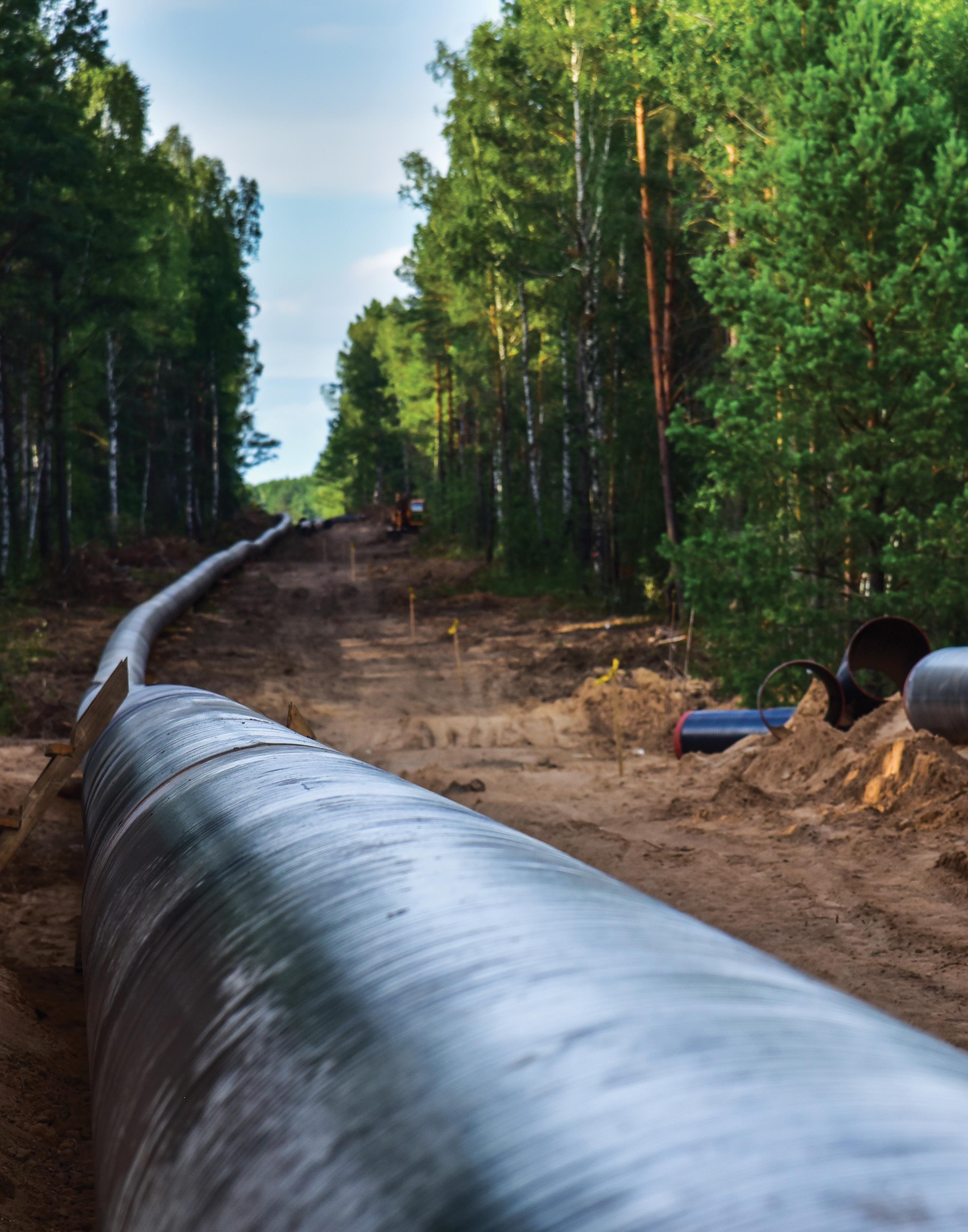 by Annabelle Powell, Journalist, Energy magazine
by Annabelle Powell, Journalist, Energy magazine
The legal framework that underlies the regulation of gas networks was conceptualised with the assumption that future demand for gas would be growing or steady. This assumed paradigm is starting to be challenged as the energy transformation in Australia, including the retirement of fossil fuel generators for electricity and growing investment in renewable energy, gives rise to significant uncertainty in natural gas demand.
Amid this energy transition and the decarbonisation objectives committed by Australian governments, the Australian Energy Regulator (AER) has released a stakeholder information paper on the issues relating to the regulation of gas pipelines.
Regulating gas pipelines under uncertainty examines the factors causing downward pressure on domestic gas demand in Australia’s eastern states, and options to manage the potential pricing risks for current and future gas consumers.
AER Chair, Clare Savage, described the paper as a catalyst for engagement with industry and other stakeholders to understand how regulation can keep up with the pace of change and ultimately protect consumers.
“It’s a timely information paper as the decarbonisation of Australia’s energy market ramps up,” Ms Savage said.
“Stranded asset risk is looming as the biggest threat to the gas industry. Gas network businesses invest in assets with fixed costs that last into the next century.
“Maintaining those assets with a potentially smaller consumer base requires new thinking on efficient network investment and how to manage the price impact on consumers and intergenerational equity.
“The purpose of our information paper is to look beyond the horizon to the future and begin asking the tough questions around price stability, affordability and future investment in gas pipelines, and how we might respond to that from a regulation standpoint.”
A range of factors are likely to exert downward pressure on natural gas demand in Australia’s eastern states in the medium to long term.
Because of climate change concerns, governments are now progressively making policies to reduce carbon emissions, such as providing incentives for residential customers to install solar photovoltaics and batteries or to increase the energy efficiency of their appliances and homes.
Increasing competitiveness of renewable electricity
Governments’ climate change-related policies have resulted in fast-growing distributed energy resources and renewable energy markets, making renewable electricity more competitive
against natural gas at both the retail and wholesale levels.
Improving energy efficiency is encouraged as a key measure to reduce natural gas demand and carbon emissions. Technological improvements in the efficiency of electrical appliances may make them cheaper and more environmentally friendly to use, compared with gas appliances.
Uncertainty in future gas prices, or an expectation of rising gas prices, can influence consumers’ investments in gas appliances and gas consumption.
Consumer sentiment towards gas
As climate change awareness continues to grow and electricity becomes more competitive compared with natural gas, some consumers may consider switching away from gas (or fossil fuels) independent of governments’ climate change policies.
As the impact of climate change is increasingly felt, there is growing social pressure on corporations to invest and operate in a way that is consistent with environmental sustainability as part of their corporate social responsibilities.
Gas plays a critical function in electricity generation. As a result, gas-fired generation often impacts the marginal price for wholesale electricity.
If renewable gases do not become commercially viable in a timely manner, the AER finds there may be a substantial decline in the demand for gas network services in the period leading up to 2050. The report explores the following impacts on the industry:
As more customers leave the gas network, there will be fewer customers to share the fixed costs of gas networks. Cost burden of unpaid past investments may shift to future gas customers
Customers who leave the gas networks may not have contributed sufficient incremental revenue to fully pay off the capital investments incurred for their gas connection and network services, and remaining customers in the network will have to shoulder that burden as those costs remain in the regulatory asset base (RAB) until fully depreciated.
With the prospect of a shrinking customer base and increasing competitiveness of
alternative energy sources, regulated gas businesses face a risk that they may not be able to recover the costs of their efficient investments and may become economically stranded.
Price volatility or uncertainty may drive further decline in demand
If future gas demand is expected to fall substantially or is highly uncertain, with corresponding expectations of price increases or price uncertainty, consumers may perceive a higher risk or cost associated with investment in gas appliances.
The AER discusses eight potential options of regulatory actions that may be appropriate to promote the efficient investment in, operation and use of gas networks while maintaining reasonably affordable and predictable gas access prices, noting they are not mutually exclusive:
» Adjusting regulatory depreciation
» Compensating for stranded asset risk
» Removing capital base indexation
» Sharing costs under capital redundancy provisions
» Revaluation of asset base
» Introducing exit fees
» Increasing fixed charges
» Maintaining status quo
These options are all different ways of bringing forward the recovery of costs or recognising greater risks in future decisions.
Stakeholders are encouraged to consider the analysis and issues set out in the information paper and provide their views in the AER’s access arrangement review processes, with respect to the specific circumstances of the relevant regulated gas network business.
Ms Savage said, “I commend this information paper as a starting point of a wider ongoing discussion on how we may navigate through the uncertainties and the transformation of the industry to a low carbon future.”
In an access arrangement review, the AER sets the amount of revenue that a gas network business can recover over a five-year period from its customers using its pipelines.
The Victorian gas transmission review commenced in December 2021, while the distribution access arrangement review is set to begin in July 2022.
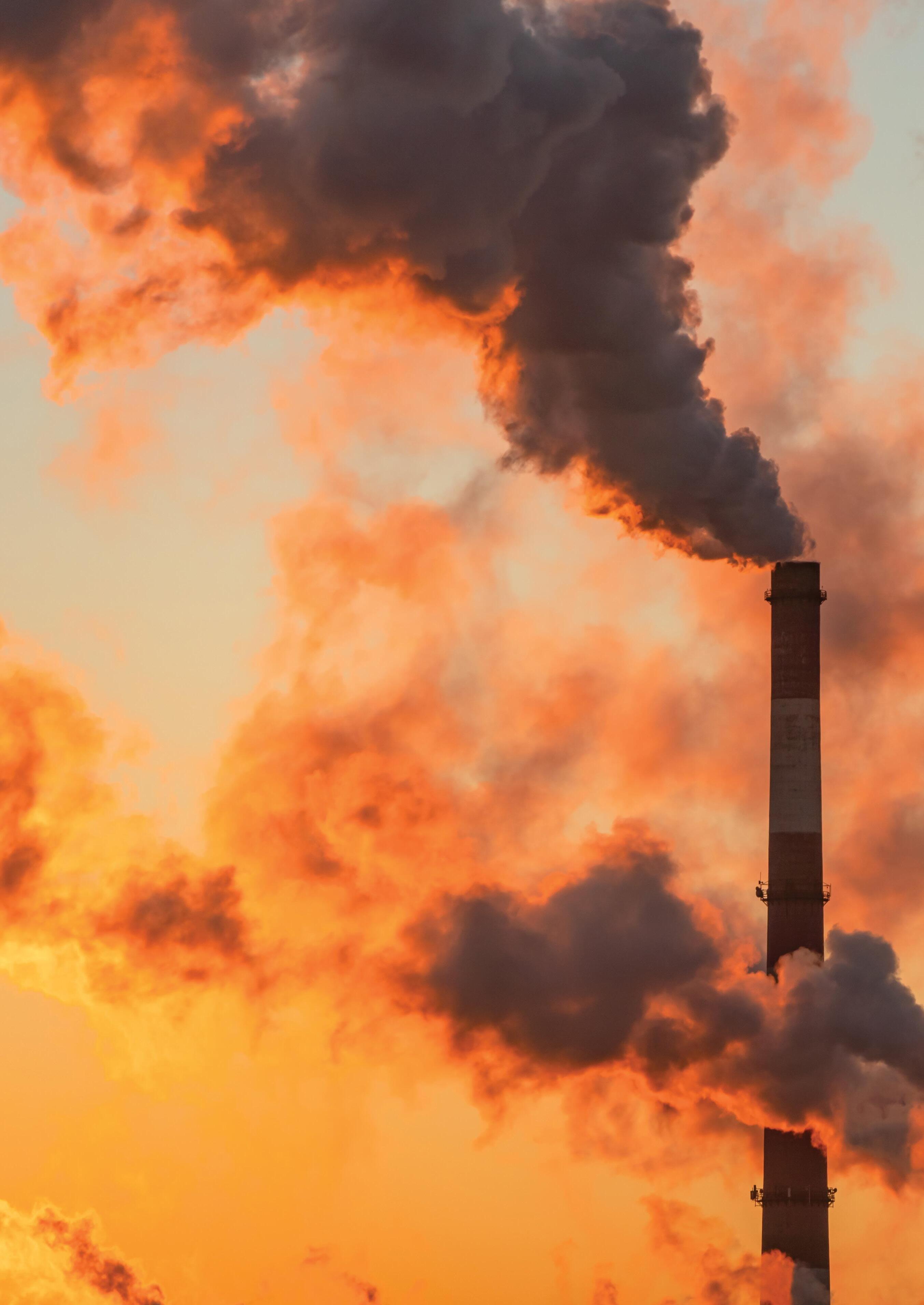 by Lauren DeLorenzo, Journalist, Energy magazine
by Lauren DeLorenzo, Journalist, Energy magazine
In 2021, the Federal Government unveiled its long-awaited climate change strategy, which hailed carbon capture and storage (CCS) technology and clean hydrogen investment as key pillars of Australia’s emissions reduction approach. But research from The Australian National University (ANU) warns that this strategy overlooks the risk of hidden emissions from fossil fuel-based hydrogen production.

Hydrogen can be produced either by natural gas with CSS technology (blue hydrogen) or through renewable energydriven electrolysis (green hydrogen).
Australia’s hydrogen strategy doesn’t make a distinction between the two processes, instead referring to both as clean hydrogen.
However, a study from ANU has found that the production of blue hydrogen poses significant risks to the climate through hidden fugitive emissions, while green hydrogen does not carry the same danger.
Study co-author and fellow at ANU’s Crawford School of Public Policy, Dr Thomas Longden, said creating an industry around blue hydrogen potentially poses risks to Australia’s target of reaching net zero emissions by 2050.
“By using the term ‘clean’ hydrogen for both renewable-based and natural gas-based hydrogen, the danger is that we could establish a hydrogen industry that actually leads to an increase in emissions,” Dr Longden said.
Fugitive emissions refers to methane that is released during the extraction and processing of natural gas.
These emissions are considered a potent greenhouse gas, and emission rates can vary widely between extraction sites, depending on the process used.
Study co-author from the ANU School of Engineering, Dr Fiona Beck, said that fugitive emissions need to be rapidly reduced to limit further global temperature increases.
“Fugitive emissions are the secondlargest source of methane pollution, and rates are rising due to the expansion of unconventional natural gas production that uses fracking,” Dr Beck said.
At COP26 in Glasgow, over 100 countries (excluding Australia) agreed to cut methane emissions by 30 per cent on 2020 levels before 2030.
“Developing a new, large-scale, lowemissions hydrogen industry based on natural gas undermines these efforts and ignores the dangers that fugitive emissions pose to our environment,” Dr Beck said.
"Our work highlights that large investment in fossil fuel-based hydrogen with CCS could be risky, locking in a new fossil fuel industry with significant emissions, and one that is likely to be out-competed by renewable technologies in the future.”
The Federal Government’s Technology Investment Roadmap identifies CCS as a priority technology, with huge investments being made in rolling out large-scale supporting infrastructure.
Yet the ANU study suggests that even with the use of CCS technology, emissions from fossil fuel-based hydrogen production could be substantial.
“The extent of the emissions is often downplayed or ignored in governments’ public statements about future hydrogen supply chains, with many treating ’lowemission’ and ’zero-emission’ production as functionally equivalent or interchangeable,” Dr Beck said.
“It is critical that we use emission intensity (i.e. the amount of greenhouse gases released per unit of energy of fuel produced), not labels, when assessing hydrogen production pathways.”
The rate of capture for CCS can vary widely depending on the type of technology used, at what point in the process the carbon is captured, and how the carbon is stored after it is collected.
Dr Beck said that the wide range of capture rates, along with a lack of emissions intensity information, can obscure accurate measures of CCS efficiency.
“The emissions intensity of fossil fuel-based hydrogen produced with CCS technologies are rarely reported, which can give an optimistic view of the emission reductions that can be achieved,” Dr Beck said.
CCS does not capture fugitive emissions, which often go unaccounted for.
“To allow a true assessment of the emissions associated with hydrogen production, the emissions intensity should include fugitive emissions (methane lost to leakage during the extraction and processing of fossil fuels), as well as emissions due to energy used to capture, compress, transport and store the captured CO2,” Dr Beck said.
Most CCS technologies have a capture rate of between 50 to 90 per cent process emissions (excluding fugitive emissions).
But the higher the capture rate, the more expensive the CCS technology becomes, further limiting its capacity for widespread use.
“High capture rates, above 90 per cent, are needed for natural gas-based hydrogen to be considered low-carbon,” Dr Longden said.

“CCS is an expensive option for emissions reduction, with most estimates for the cost of carbon capture being above $82 per tonne of carbon dioxide (CO2). These estimates increase to about $109 per tonne of CO2 for high capture rates.”
Achieving significant emission reduction rates through CCS would require a number of costly steps, according to the co-authors of the study.
First, CCS technology would need to be applied at an individual plant level to capture CO2 from waste gases.
Then there’s the infrastructure required to store the captured CO2, which usually means a pipeline network or CO2 tankers would be needed to transport the gas to the storage site.
“To minimise the emissions of the CCS process, renewable energy could be used to power the additional processes needed to capture, compress, transport and store the CO2, which could add to the overall cost,” Dr Beck said.
“This is rarely factored into the costs of ‘blue’ hydrogen, as usually the methane is used to produce power on site.”
Dr Beck said that an efficient emissions reduction CCS system would also need to follow strict regulations on the amount of fugitive emissions it produces.
Finally, power plants would need to verify that their processes are not leaking CO2 back into the atmosphere, which necessitates additional infrastructure and monitoring.
The challenge to deploying lowemissions blue hydrogen at scale is how to do it in a cost-effective manner.
While it’s currently cheaper than renewable hydrogen, the cost of natural gas-based hydrogen is expected to remain stagnant.
However, there is a clear pathway to cost reduction for renewable hydrogen.
The cost of renewable hydrogen is dependent on the cost of electrolysers and the expense of renewable electricity, which has seen a huge decrease over the last two decades and is expected to continue to become more affordable.
With economies of scale, the cost of electrolysers is also projected to fall.
“Our analysis indicates that renewable hydrogen could out-compete fossil fuelbased low emissions hydrogen with CCS in the future, raising the risk of stranded assets given the long lifetime of fossil fuel-based hydrogen production plants,” Dr Beck said.
Renewable hydrogen also beats fossil fuel-based hydrogen when it comes to comparing emissions intensity.
The researchers calculated that with capture rates around 60 per cent, the emissions intensity of fossil fuel-based hydrogen is 25 per cent lower than burning natural gas directly, (assuming the IPPC default methane leakage rate of 1.7 per cent).
With capture rates of 90 per cent, emissions intensity would be 66 per cent lower than burning natural gas.
“It is worth noting that in calculating this we are using a 100-year global warming potential for methane,” Dr Beck said.
“It has been argued that, since methane is a short-lived gas with large short-term effects on the climate, a 20-year global warming potential should be used when calculating emissions.”
When using the 20-year global warming potential, researchers found that producing hydrogen with a 60 per cent carbon capture rate would only result in an eleven per cent reduction in emissions intensity compared with burning gas directly.
With capture rates of over 90 per cent, this translates to a 40 per cent emissions intensity reduction.

Dr Beck said that by this same measure, “Renewable ‘green’ hydrogen has zero emissions intensity and offers the most benefit for decarbonisation.”
Hydrogen and its derivatives, such as ammonia and synthetic methanol, could be used as fuel to help abate emissions in sectors with intense energy requirements.
“Hydrogen fuels could also allow large-scale storage and trade in renewable energy,” Dr Beck said.
“This is particularly interesting for Australia, which has abundant renewable resources and existing energy trade relationships with partners in Asia-Pacific and beyond.”
Currently, two per cent of global emissions can be attributed to fossil fuel production of hydrogen for industrial use.
“Replacing Australia’s current energy exports of coal and LNG with renewable fuels, and processing our metal ores onshore with renewable energy and renewable hydrogen, could displace roughly five per cent of global emissions, or eleven per cent of the emissions in Asia Pacific, using 2019 values,” Dr Beck said.

The development of a domestic and export hydrogen market in Australia is a key focus of the Federal Government’s Low Emissions Technology Statement . One of the challenges of decarbonising gas is how large volumes of alternatives like hydrogen can be stored to provide the same level of energy security.
One of the main advantages of gas infrastructure is its ability to store vast amounts of energy. Australia has developed 275PJ of natural gas storage, which represents more than the combined annual gas consumption for households and businesses1. This storage helps balance the daily supply of natural gas with fluctuating demand throughout the day, and more importantly, allows seasonal variations in heating demand to be met. This storage is the equivalent of almost six billion household batteries, or around 240 batteries for each Australian2. That’s a lot of energy storage.
As we transition to hydrogen, it is important to understand how much storage capacity would be needed to provide the same level of energy security and whether geological storage can be used.
A joint project between Future Fuels CRC (FFCRC) and CSIRO completed an assessment of underground hydrogen storage (UHS) opportunities in Australia. The aim of the assessment was to estimate the scale of the potential underground storage capacity of hydrogen in sites that are broadly suitable – but not to rank sites from worst to best, which would require further work.
The scale of the storage challenges helps paint the picture. A total storage capacity of just over 600PJ (about five million tonnes) was estimated. This was made up of 300PJ for supporting the gas/hydrogen network, 300PJ to support hydrogen exports and between 1.3 and 1.6PJ3 of hydrogen to support the electricity network if hydrogen is used instead of batteries and/or pumped hydro.
The four main geological storage options for UHS are salt caverns, depleted oil and gas reservoirs, aquifers, and hard rock caverns. Depleted gas reservoirs and saline aquifers are geologically similar.
Salt caverns can be created in various ways within salt domes or salt deposits by leaching out large cavities through the injection of
water. The salt surrounding the cavern is of very low permeability and a very effective barrier to gas leakage. Europe has an abundance of salt deposits, so it has focused on using salt caverns as an option for UHS.
Salt caverns are already used for storing hydrogen for the petrochemical industry.
Depleted gas fields have been the preferred options for underground storage of natural gas. These fields are easy to develop and can utilise existing infrastructure (e.g. wells, pipelines). They have also demonstrated containment as they have trapped natural gas over long periods of time.
Like gas storage, UHS requires a site with adequate storage capacity, injectivity, and safe containment in the form of an impermeable caprock. Repurposing existing gas storage sites to hydrogen will require assessments of the characteristics and may also require some modification of infrastructure.
In regions where the above formations are not available, saline aquifers can be developed for gas storage. The formation should have similar properties as depleted gas reservoirs, such as requiring a trapping structure and having adequate storage capacity and permeability to be able to inject and withdraw hydrogen.
Abandoned mines have been canvassed as an option for UHS. These hard rock areas occur in places where there are no depleted gas fields or saline aquifers. Compressed air storage and CO2 storage have also been proposed for abandoned mines but to date, there are no examples of UHS in these mines. New engineered caverns can also be built instead of repurposing abandoned mines.
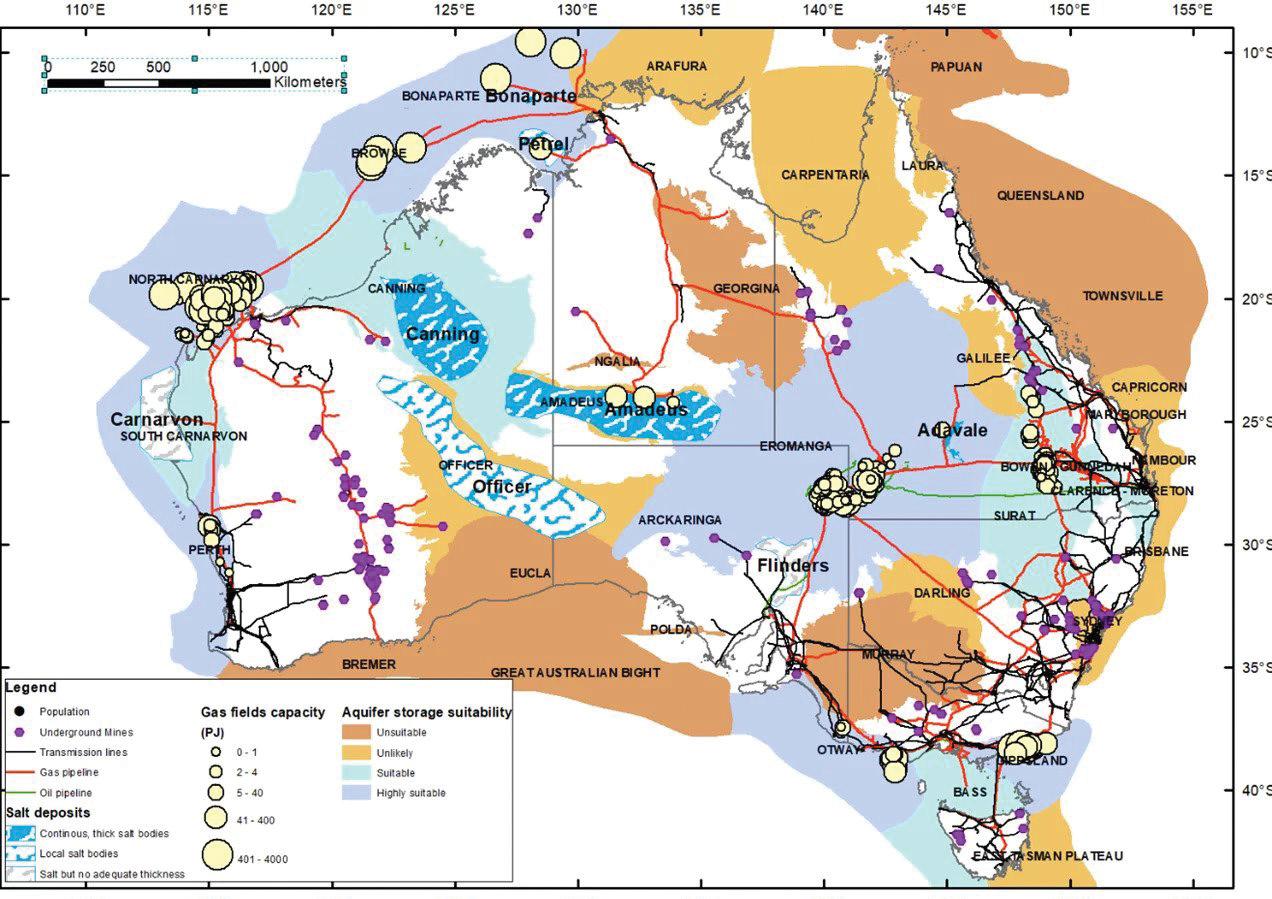
The total estimated storage potential in depleted gas fields is 37,996PJ. This is a high-level estimate but not a geological assessment. Converting this to actual storage projects will require more detailed assessments to determine the social or environmental acceptability, the specific location of the sites, and much more detailed site assessment and characterisation work.
The key outcome from this initial assessment is that the scale of prospective storage is much higher than the potential demand for UHS of 600PJ. So only a few sites would be needed in each region.
A qualitative assessment of storage potential for saline aquifers and hard rock caverns was also completed.
As shown in figure 1 and figure 2, there are suitable options across all areas in Australia.
UHS is expected to be the most cost-effective option when the volumes of hydrogen that need to be accommodated are large. The cost estimates can vary considerably depending on the type of storage, the size of the storage option, its location, and the level of utilisation.
The project provided a high-level estimate of the storage potential of UHS. The main finding is that the potential for storage is higher than the potential demand for storage for meeting seasonal gas/hydrogen demand and hydrogen exports.
Implementing UHS in Australian salt caverns requires:
» A more detailed mapping and characterisation of known salt deposits
» Exploration for new salt deposits
» UHS pilot/demonstration in Australian salt caverns
1. Annual gas consumption for households and businesses in Australia is approximately 186PJ
2. 275PJ of energy is the same as that contained in 5.66 billion 13.5kWh household batteries
3. Based on AEMO neutral scenario which requires 350 to 450 GWh of storage by 2040

For gas fields, the actual capacity, or dynamic storage capacity, would need to be confirmed, initially through reservoir simulations, but ultimately by performing pilot hydrogen injection and production experiments. Specifical aspects to be tested include:
» Amount of cushion gas needed, mixing with residual hydrocarbons
» Interaction of hydrogen with seal – capillary pressure (containment), diffusion, reaction
» Interaction of hydrogen with reservoir – relative permeability, wettability, geochemistry
The capacity to store energy is an essential component of a decarbonised economy to support variable renewable electricity. It is also an important component of a hydrogen export market for Australia to be able to safely store hydrogen. Once again, Australia's unique geography can give it an edge.
Note: This article was originally published on the Energy Networks Australia website.
When the wind slows down and the sun stops shining, hydropower emerges as a steady, reliable renewable energy giant. A report from the Clean Energy Council (CEC) highlights how investment in one of the oldest and most established renewable technologies can support Australia's energy transition, and what needs to be done to make the most of this critical resource.
While intermittent renewable energy sources such as solar photovoltaics (PV) have seen a rapid increase over the last decade, one of Australia’s biggest clean energy contributors has remained relatively overlooked.
Hydropower has been in use in Australia since 1914, and made up 23 per cent of the country's renewable energy supply in 2020.
A recent report from the CEC, Hydropower: The backbone of a reliable energy system, highlights how the energy source could play a key role in decarbonisation and in replacing coal-fired power stations.
CEC Chief Executive, Kane Thornton, said that the report’s findings help clarify the challenges of optimising this resource.
“Hydropower has done a lot of heavy lifting over the last 100 years,” Mr Thornton said.
“With the right support, it can continue to do so for 100 more years, creating thousands of jobs today, while underpinning the reliability of the grid for generations to come.”
Despite being the driest inhabited continent on earth, hydropower has a long history of use in Australia, with the bulk of hydropower plants developed between 1951 and 1996.

Over the last 50 years, the implementation of hydropower in place of burning fossil fuels has avoided the release of over 100 billion tonnes of carbon dioxide, according to International Hydropower Association estimates.
With 8.5GW of collective generated power across the country, hydropower represented an approximate total of 6.4 per cent of total energy demand in 2020.
As a flexible power source, hydropower can act as a stabilising ‘backbone’ for the renewable energy system, and can play a critical role in meeting peak demand by adapting its energy production to meet varying changes in energy demand.
In particular, hydropower can mitigate the higher variation of other renewable energy resources, particularly during low-output periods for wind and solar generation.
As these intermittent renewable energy sources decrease in price and increase in availability, the stabilising role of hydropower is expected to become even more critical.
Although hydropower is already helping to meet these network reliability challenges, the report reveals Australia hasn’t seen the full extent of its potential.
The Australian Energy Market Operator (AEMO) estimates that up to 50GW of renewable energy generation will be needed to take the place of coal-fired stations in the National Electricity Market (NEM) by 2040.
Of this, new dispatchable energy sources, such as hydropower and big battery storage systems, will need to make up 19GW of energy by 2040 to accommodate for the elevated levels of renewable integration.
Mr Thornton said that considering AEMO’s forecasts, hydropower has a huge role to play as one of the most mature forms of renewable energy generation.
“Its large energy storage capability and the essential system services it provides leave it ideally placed to thrive in a 21st-century energy system to complement the rollout of wind, solar and battery storage, and drive the reliable and secure decarbonisation of the Australian energy sector,” Mr Thornton said.
With record uptake of solar PV and wind generation, the energy market is predicted to be closer to AEMO’s Integrated System Plan (ISP) most ambitious renewables integration scenario than the previously forecasted moderate scenario.
“Central to maintaining reliability and keeping the lights on, hydropower assets not only provide a low-cost and dependable supply of energy; they also deliver a wide range of crucial system services and flexibility that complement the wind and solar generation that is increasingly dominating the Australian energy mix,” Mr Thornton said.
“This proven technology will work alongside batteries and a stronger network to build the resilience of our energy system
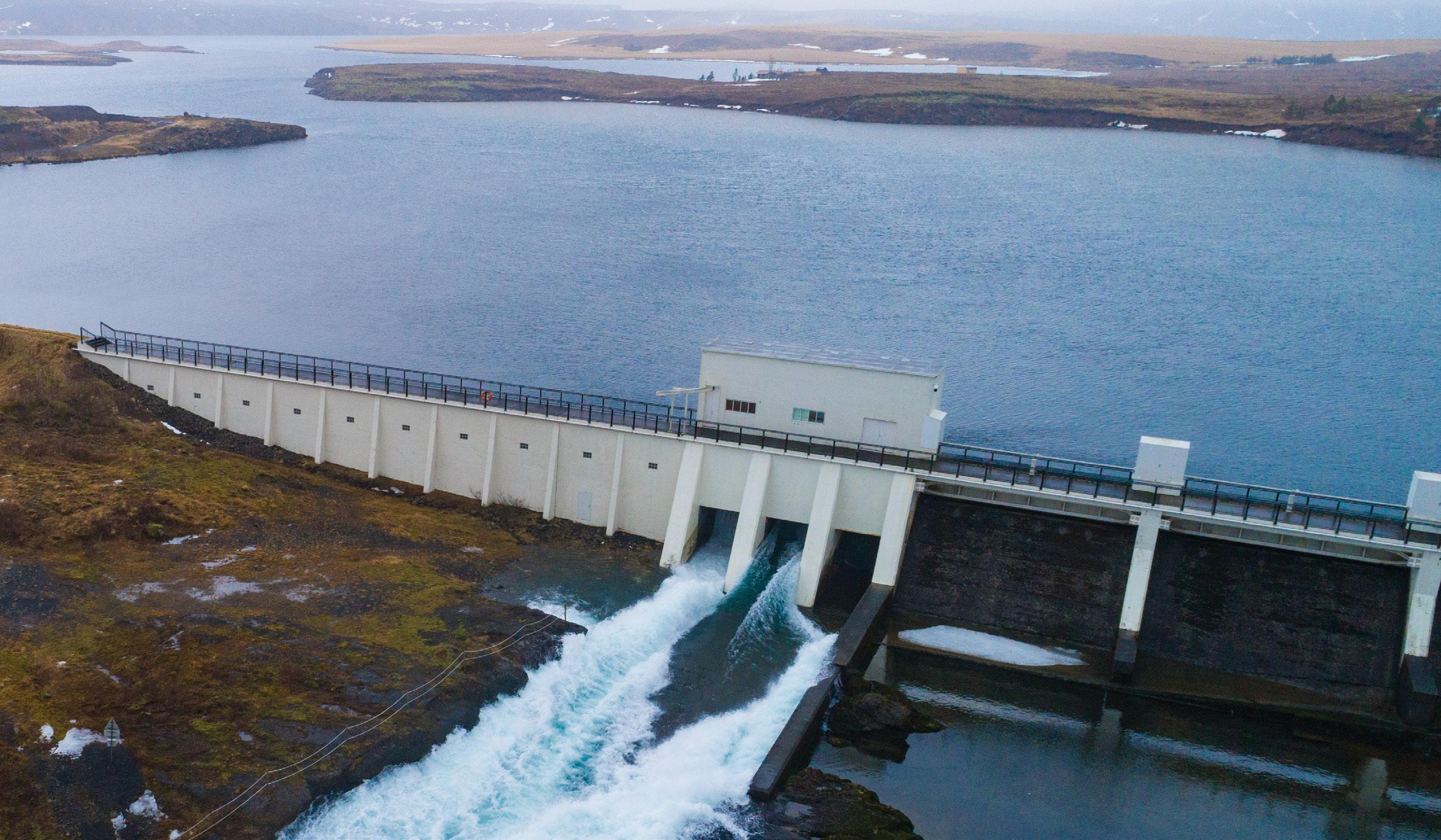
in the face of ageing coal-fired generators and increasing extreme weather events.”
As a capital-intensive resource, hydropower has not seen the same level of deployment as other renewable energy storage projects such as batteries.
Due to the high cost and complexity of hydropower, very few projects have been developed without financial support from the government — the launch of the Snowy 2.0 hydroelectric project in New South Wales, for example, required significant government investment.
Clear market price signals within the NEM would help to make hydropower’s value even more clear.

This would highlight hydropower’s services, such as medium and long-term energy storage, the ability to support wind and solar, and provision of fault current and voltage control.
The Energy Security Board (ESB) and the Australian Energy Market Commission (AEMC) are developing new markets to value these services, such as system strength.
Defining other value measurements will be critical to recognising the worth of hydropower as a reliable and stabilising renewable energy source.
As the third-largest electricity storage device in the country, the 250MW Kidston Pumped Storage Hydro Project has demonstrated the huge potential for hydropower initiatives.
It is located in Far-North Queensland, and is the only Australian hydropower facility developed by the private sector.
Construction of the project is expected to be completed in 2024, when generated power will be sold directly to the NEM to bolster the region’s energy security.
The biggest new hydropower project is the 2,000MW/350,000MWh Snowy 2.0 Hydroelectric project in New South Wales, which links two dams through 27km of tunnels to provide power.
When energy demand is low, water will be pumped to the upper dam, and when demand is high the water will be released back to the lower dam to generate energy, providing a flexible power system.
Snowy 2.0 is expected to begin generating power in early 2025.
Hydro Tasmania’s Battery of the Nation project involves a pumped hydro project at Lake Cethana, with the potential redevelopment of the Tarraleah hydropower scheme on the horizon.
The initiative has received $5 million from the Australian Renewable Energy Agency (ARENA), and is seeking community consultation before plans are finalised.
With more than 120 operating hydroelectric power stations in Australia, as well as three major Pumped Hydro Energy Storage (PHES) facilities, hydropower will continue to play an integral role in the renewable energy mix.
Both ARENA and the Federal Government’s Low Emissions Technology Statement have identified the significance of large-scale energy storage solutions.
Dozens of new hydropower projects are currently in development across the country, with continued investments in large-scale projects highlighting the transformational power of this fundamental renewable energy resource.

In the energy industry, there are many steel components that must withstand the elements at their harshest extremes in Australia, and millions of dollars are spent on ensuring they don’t cause a catastrophic failure. Often, this can require highly expensive materials, rigorous maintenance regimes, numerous repairs or replacements.
Hydrogen embrittlement is one of the many concerns that the industry has tried to address since it was identified in 1875 by W.H. Johnson. Hydrogen embrittlement is the permanent loss of ductility of a metal, which is caused by the presence of hydrogen in combination with stress. The result is intergranular fractures through the grains of steel.
This hydrogen often arises in a manufacturing process, where the pickling of steel is involved in the galvanising or electroplating process. It can also arise in situations in the right (wrong) environmental conditions, which can include salinity of water or air vapour, leachates, effluent, or acidity of rainwater.
It is caused by the absorption of hydrogen atoms into the steel, with trapped ‘H’ atoms subsequently forming ‘H2’ gas molecules within the steel, resulting in extreme internal stresses. It is the combination of material susceptibility through its properties, the stress load under which it is performing, the hydrogen source in production, and the environment which leads to potentially disastrous failures.
Of course, we still need to provide very robust corrosion protection to ferrous parts to avoid the expensive maintenance
and replacement programs in future years or use highly expensive noncorrosive materials.

Coatings that produce a lot of hydrogen in their processes, such as electroplating and hot-dip galvanising, should be avoided. A coating that allows the product to be baked in ovens to allow the diffusion of hydrogen out of critical parts such as fasteners, brackets, and pole hardware, is ideal.
Thermal Zinc Diffusion (TZD) is being proven worldwide to have ideal properties to protect critical components due to the nature of the dry baking process reducing hydrogen rather than inducing it.
TZD is also suitable for use with high tensile steel grades, with hydrogen embrittlement concerns removed. Steel grades at tensile strengths greater than 800 MPa are typically at risk of hydrogen embrittlement. TZD does not employ acid pickling, but typically utilises shot blasting for surface preparation, permitted by the greater diffusion time and increased development of the TZD gamma layer.
The layers of TZD are typically harder than that of the parent material typically exceeding 35 Rockwell C (ASTM A1059/A) resulting in excellent wear resistance properties.
Higher-tensile products such as critical fasteners can also have TZD protection, while the thread will have no galling issues, with the even coating consistency enabling torque and tension performance to be more accurately achieved.
ArmorGalv in Thornton, New South Wales, is Australia’s only plant providing TZD, and has recently expanded to a larger facility adding new equipment to cope with the growing demands of a new forwardthinking Australian industry; demanding non-toxic environmentally friendly solutions. ArmorGalv is also launching ArmorThread to support industry with high-tensile corrosion protection without hydrogen embrittlement.

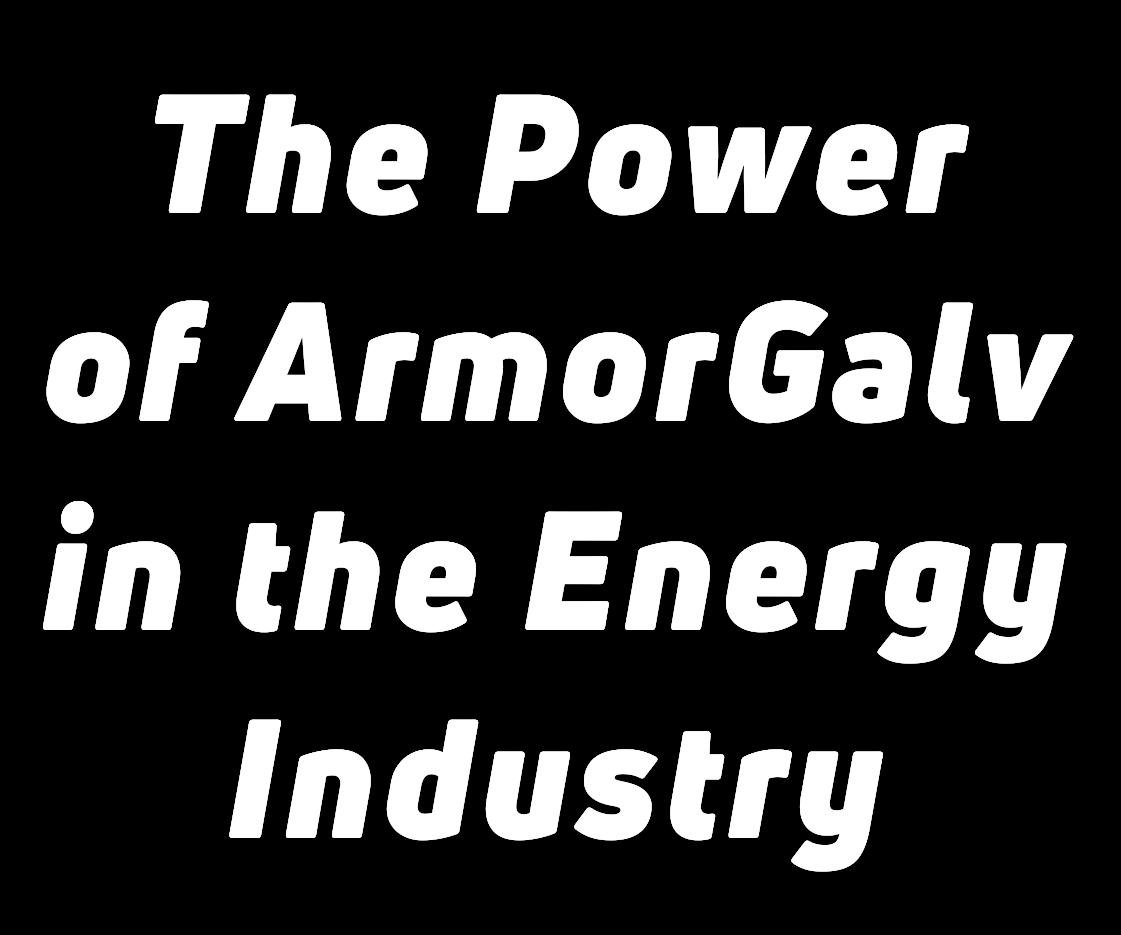

A R M O R G A L V P R O T E C T I O N
F O R A L L F E R R O U S M E T A L S
H i g h l y c o r r o s i o n a n d a b r a s i o n r e s i s t a n t
C o n t r o l l a b l e , e v e n a n d p r e c i s e – f r o m
2 0 μ t o 1 0 0 μ p l u s
H a r d , n o n - m a g n e t i c , w e l d a b l e a n d s p a r k
f r e e
C h i p p r o o f a n d a m e n a b l e t o c r i m p i n g , b e n d i n g a n d f o r m i n g p o s t p r o c e s s
N o h y d r o g e n e m b r i t t l e m e n t
GRADES 8.8, 10.9, 12.9 & THREADED BAR
NO HYDROGEN EMBRITTLEMENT
ANTI-GALLING
LOW CO-EFFICIENT OF FRICTION
TORQUE TENSION TESTED
NO LOSS OF HARDNESS OR TENSILE STRENGTH

F o r P e r f o r m a n c e
a n d E n d u r a n c eA r m o r G a l v i t !


H i g h l y h e a t r e s i s t a n t ( u p t o 6 5 0 ° C )
E x c e l l e n t s u b s t r a t e f o r p a i n t , e p o x y ,
r u b b e r o r p l a s t i c



0

 by Jason Willoughby, CEO of CWP Renewables
by Jason Willoughby, CEO of CWP Renewables
CWP Renewables closed out 2021 with two significant power purchase agreements (PPAs) with major corporate partners. It’s a push we’ve seen for a few years now – corporates keen to secure their slice of clean energy to help meet net zero emissions and renewable electricity targets. Renewable energy feeding into the National Electricity Market (NEM) has been rising in recent years, but there will be a notable gap in the next few years.
CWP Renewables will start construction on Uungula Wind Farm in Central West New South Wales in 2022, with an expected capacity of 400MW, but the reality is that across the industry demand will outstrip supply when it comes to corporate PPAs for the medium term, while the development pipelines play catch-up. There are only a handful of wind energy projects under construction or about to enter construction across all states and territories.
According to the Business Renewables Centre Australia’s (BRC-A) annual State of the Market report for 20211, 770MW of corporate PPAs were signed last year to the end of October 2021, following 1.3GW of capacity signed in PPAs for 2020. In total, it’s estimated at least 110 corporate PPAs have been inked for more than 4GW of renewable energy since 2017.
To date, we’ve signed more than 525MW in PPAs. In 2017, it was government and utility customers leading the way with PPAs. We signed our first agreement with the ACT Government, followed by Meridian Energy. The following year, Snowy Hydro signed with us and since then we’ve had retailer Flow Power join us, as well as Sydney Airport, CBA, and Transurban.
Last year, Woolworths Group partnered with us to supply 30 per cent of its electricity needs in NSW – a large contract given the group’s usage accounts for 1 per cent of all energy used in Australia. The deal was followed by food and beverage manufacturer Nestlé Australia – signing
a ten-year PPA to cover 100 per cent of its electricity use across six factories, two distribution centres, three corporate offices, 20 retail boutiques, and a laboratory.
We are now seeing consistent and ongoing demand from corporate customers seeking out agreements to meet their clean energy commitments, and this appears to be the common driver across the industry.
BRC-A’s State of the Market 2021 report notes: “For two years running, over 60 per cent of buyers nominate non-price drivers as drivers for interest in PPAs. The growth of organisations signing net zero and sustainability commitments is likely to solidify this trend and is a key factor underpinning the resilience of the corporate PPA market.”
Whilst it’s difficult to put a blanket rate on demand, we are observing potential customer demand outstripping our capacity by a factor of four. You could be forgiven for thinking this demand will drive the renewable energy industry for years to come and in many ways, it will.
What won’t change are the increasing challenges in finding suitable sites, the importance of ensuring the right balance of community impacts and benefits, and muchneeded transmission network upgrades not due till late this decade.
In relation to dwindling sites and increasingly engaged regional communities, social license will be more important than ever. Community and environmental benefits will be scrutinised more, but also industry track records will come to the forefront, as the task required to bring
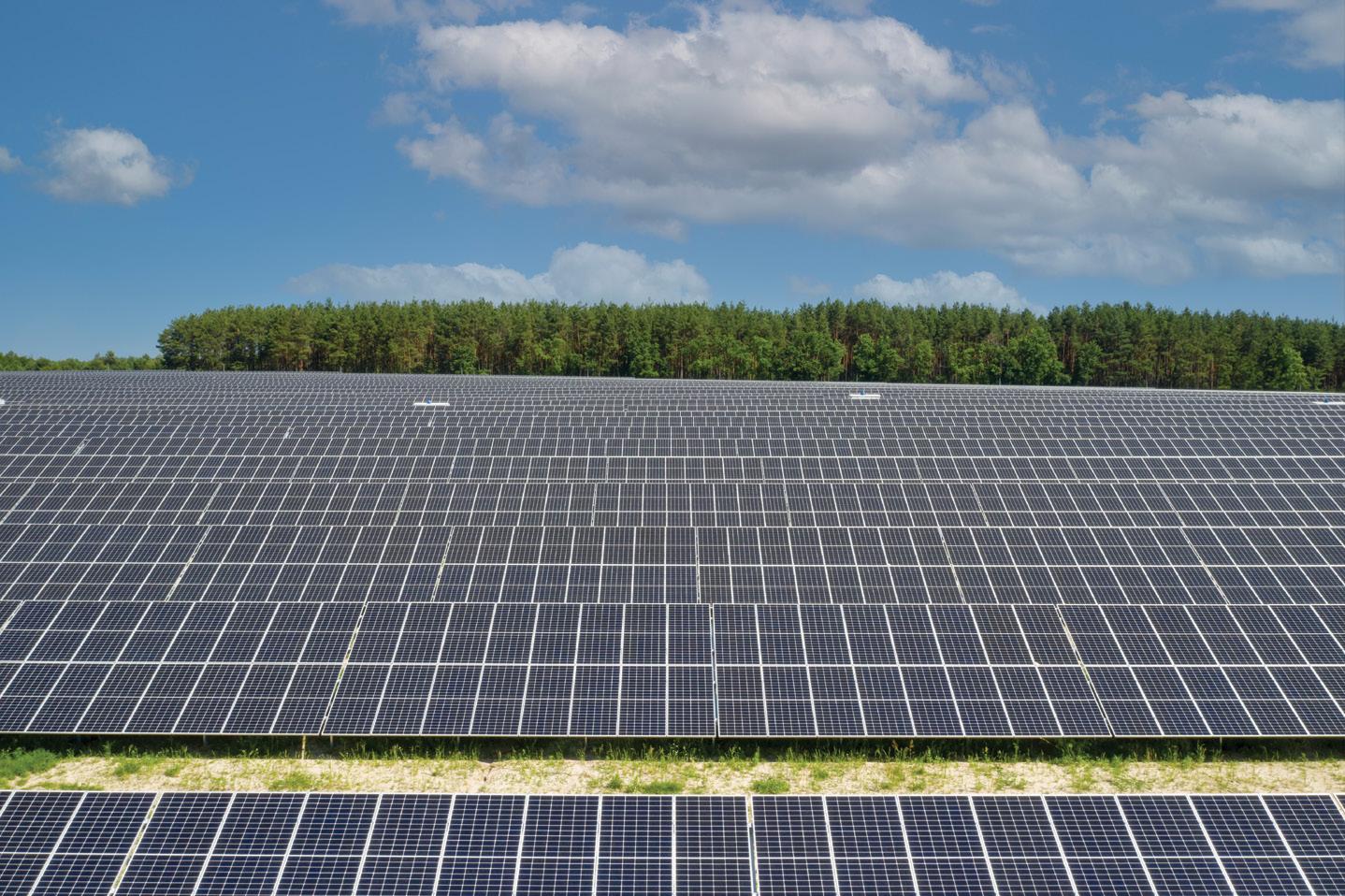
Despite the recent increase in demand, there is set to be a gap in renewable energy feeding into the National Electricity Market.
1. https://arena.gov.au/assets/2021/12/corporate-renewable-power-purchase-agreements-in-australia-state-of-the-market.pdf
2. https://pp.planningportal.nsw.gov.au/ISEPP-renewable-energy
projects to completion and operate them becomes more complex, making it harder for single project proponents to enter the market.
We’ve also seen plans in New South Wales to apply rules on where renewable energy projects can be built in relation to key regional towns to protect residential and commercial hubs. Under proposed amendments to the Infrastructure State Environmental Planning Policy, the cities protected include the likes of Armidale, Dubbo, and Griffith as they are “at risk of encroaching solar and wind development due to their proximity to areas of relatively high solar and wind resource potential”.2
There is no doubt the desire to develop renewable energy is high. The rollout of renewable energy zones (REZs) in New South Wales has seen an incredibly high rate of interest from developers, but not all proposed projects are likely to proceed. Increased competition will mean the projects offering credible, robust commitments to the community, government and customers will likely come out on top.
With 2025 just around the corner, there are probably quite a few businesses that will be disappointed that they can’t meet a commitment of 100 per cent renewable electricity in this timeframe. For many corporates, it may well come as a shock that negotiations need to be well underway now to have the chance for new capacity to assist in making the transition by 2025.
What businesses and those holding them to account will need to accept is that a commitment to purchase renewable electricity post-2025 will need to become the new green standard. Having a PPA locked in with a wholesale generator will need to be the benchmark while we wait for more projects to come online. As flagged, the pace of construction is not in line with customer demand. CWP Renewables has a strong development pipeline of 3.5GW, but only 400MW of capacity will be available for 2025.
Of course, offshore wind energy is making headway and in time it will offer a new range of capacity. But in the mediumterm, corporate energy users will need to commit upfront to a binding agreement and wait for their clean electricity to connect to the grid. Either way, it’s a move in the right direction, signalling a change for the better as we all transition to net zero emissions and an economy powered by renewable energy.
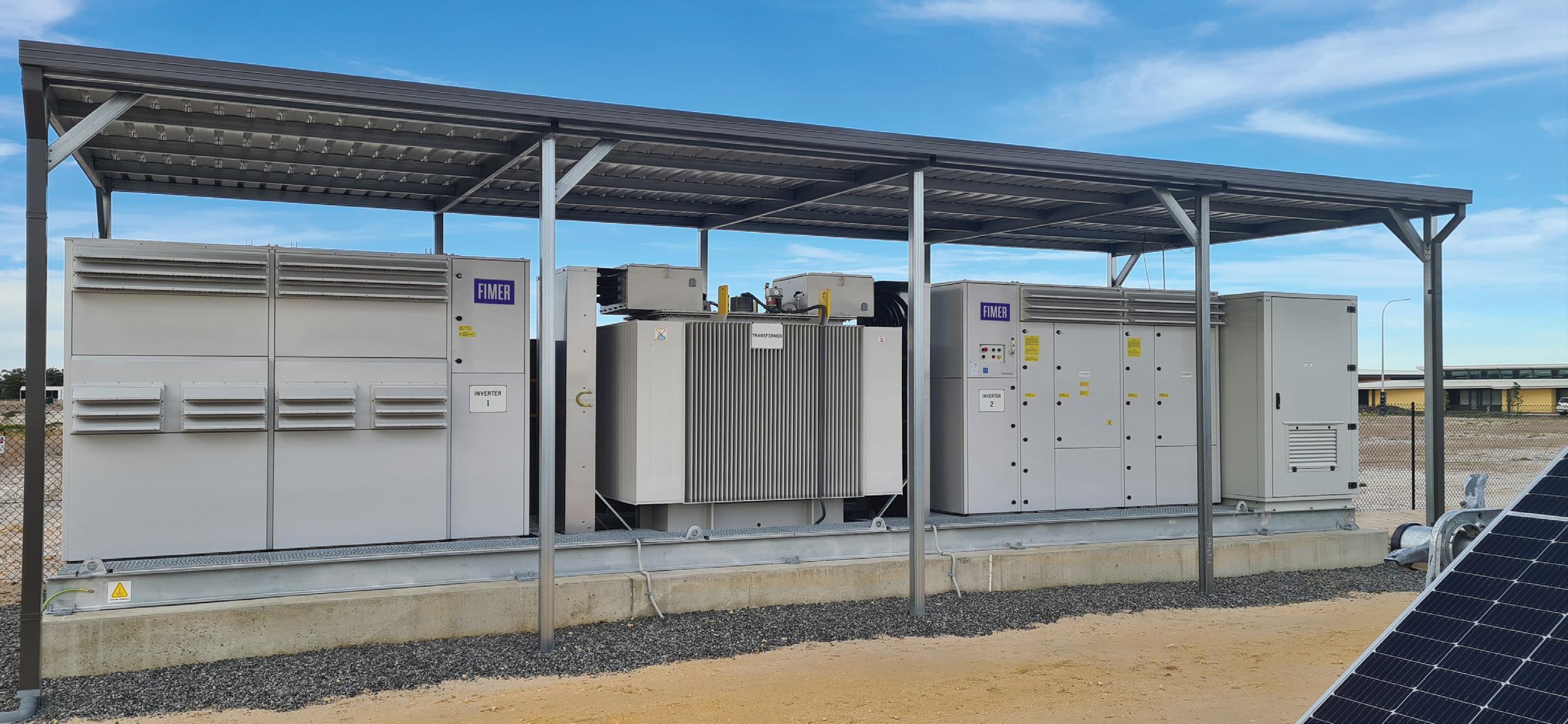
There are many reasons for the massive market growth in the sub-5MW sector. One of the main reasons is that almost any generating system connected to the National Electricity Market (NEM) less than 5MW is exempt from registering as a generator in the market.
This exemption releases developers from the massive regulatory challenges, delays, and costs faced by larger generators who must register as a generator and ensure strict compliance with various other NEM regulations. They may also sell Large-scale Generation Certificates (LGCs) to organisations, such as supermarkets, to meet LGC quotas to meet Clean Energy Regulator’s requirements.
However, it is essential to understand the exemption under the NEM rule. For instance, it does not apply to a system that is artificially held to less than 5MW by software-controlled power limitations but is physically capable of more. DNSPs and TNSPs carefully enforce this policy across the board.

The magic number developers are targeting is 4.95MW. This number offers the most significant generation potential without attracting the attention of regulators.
Designing a decentralised solution using string inverters for a sub 5MW project involves connecting many units to add up to a total capability below 5MW, which is a reasonably simple solution. FIMER’s award-winning PVS-175 solution is ideal for sub 5MW projects when coupled with the Medium Voltage Compact Skid.
However, the options in the centralised space have traditionally been less considerate of the regulatory challenges of the Australian energy sector. Individual systems tend to be too small or large, with none close to 4.95MW. For performance and financial return on the investment, the goal is to come as close to 5MW as possible.
Under 5MW, centralised inverters tend to top out at around 4.6MW, with the following options being 5MW, 5.5MW and 6MW, all of which attract regulatory obligations.
FIMER has developed a new solution specifically for the Australian market: a single, central 4.95MW plug-and-play inverter station. It’s not a larger inverter throttled by software in an attempt to stay below regulatory levels. FIMER’s PVS980-CS is custom-built to a maximum level of 4.95MW to deliver maximum returns.
With both feasible decentralised and centralised solutions now available, It’s all about choosing the right model for your next project.
There are many considerations when choosing to go with either a centralised or decentralised solution for a sub-5MW solar project. Historically, it may not have been feasible to go down a centralised solution. However, today, there are clear and reliable options for both centralised and decentralised developments under 5MW.
FIMER’s centralised solution can be built as high as 4.95MVA, whereas FIMER’s decentralised solution can be built as high as 4.995MVA utilising a modular inverter solution.
FIMER has a detailed white paper that goes into the magic number of 4.95 and another paper exploring the difference between central or decentralised solutions.
To learn more about FIMER’s sub-5MW solutions, head to: https://www.fimer.com/

The future is electric and we are ready for the new era of renewable energy.
We are a leading global manufacturer of solar inverters and electric vehicle charging infrastructure for all size applications. Our products and services are based on decades of experience coupled with the dedication and expertise of our specialist teams around the world.
Investing and working in the solar and e-mobility sectors is the right choice to ensure we build a better world to leave to future generations.
Learn more: fimer.com/anz
The fragility of the energy sector has been well known in cyber circles for many years. Technology across the sector has become more interconnected, where the once ‘isolated’ legacy systems of old have been merged with contemporary corporate networks. This convergence has grown a new set of vulnerabilities on both physical and digital-based assets. Combine this with the well-documented lack of skills in the cyber realm, amplified more so in the energy sector, an ever-growing reliance on third-party cloud providers, and you have an idyllic environment for proactive criminal organisations and nation-state actors to target.

In a post-COVID world, we have seen an increased rate of technology adoption to suit the needs of remote virtual working, and this has not made the stretched responsibilities of overworked cyber support personnel any easier. In fact, recent audit statistics from an appropriately regulated sector showed that organisations had not improved their cyber maturity levels at all, so much so that 2019 recommendations still have not been addressed.
It’s not all bleak however, the Federal Government has taken well-defined steps to best reduce the impacts of cyber risk. This has come in the form of regulatory stopgaps; SOCI, Cyber Security Strategy 2020, ESB 2025. These measures are by no means comprehensive, nor will be that elusive silver bullet, but collectively there has been an attempt to provide a cohesive framework across a gaping range of capabilities within the sector.
Along with these regulations, organisations need to not only address cyber risks as we have traditionally thought of them, but they also need to take a forward-looking, ten-year outlook and put a lens on the threats specific to how we will generate and consume energy in the future.
The proliferation of renewables and the distributed nature of the energy grid will expose an issue that will be hard to come back from. For those in the industry for the past three decades, we will begin to witness history repeating itself.
At the turn of the century, with the growing acceptance and reliability of the internet, eCommerce systems were deployed with very little design thinking around security. This brought about a need to bolt security onto existing applications, which sured up some gaps, but still left many open.
Forward the clock to more recent times, as we rely on third-party cloud providers to initiate a hybrid on-premise/cloud strategy. Again, we should have learned from our mistakes and looked to build in the correct security controls, and yet in some instances this improved, but mostly we continue to consider security as an afterthought.
These examples are an effect more broadly around technology adoption for all industry sectors. Here is an opportunity in the energy sector, to adopt a secure by design approach when growing the new paradigm of energy generation.
Consider a 2030 Australia, where we have a high percentage of PV panels supplying electricity for a large part of our population and there is a vulnerability exposed in that ecosystem. Taking out solar farms, and millions of household panels would put undue stress back onto the grid, which could bring a large city to its knees.
To break this down simply, the IoT devices being installed and configured at our homes need to have security by design thinking right upfront. Cyber best practices need to be considered during installation, and the inverters and panels themselves need to have a published bill of materials that comprise the makeup of such devices. Shame on us if we are unable to right the wrongs of the past and instill a best practice cyber mentality correctly from the beginning.
In light of the pending disaster above, we are progressing, and to ensure that progression is in a forward motion, the voice from the top needs to be understood.
Other regulated industries have placed direct accountability with board members and for the energy sector, impending regulations along with the tightening of the ACSC’s Essential 8 and awareness

campaigns are continuing to raise the importance of cyber at senior executive levels.
Government mandates have not been defined by the brains trust at specific departments. A great example of this was the public consultation process that was undertaken to ultimately release Australia’s Cyber Security Strategy 2020 – 215 written submissions culminated in a plan that has been well received by industry.
Similarly, the Security of Critical Infrastructure (SOCI) Amendment Bill, with over 3,000 points of view, has allowed the Australian cyber community to voice their input into improving the resilient nature of our critical infrastructure.
Regardless of your opinion of SOCI and without debating the details, this reform will elevate the importance of cyber within industry sectors and further to entities within those sectors to the senior executives, where important evidence-based funding decisions need to be made.

If our baseline best practices have provided some foundational first steps, and there is a vision on sector-wide governance on standards relating to DER technology, then we also need to address our ability as a nation to provide a coordinated response to a complex, multijurisdictional cyber-attack.
Our emergency management arrangements are well understood in the case of a flood or bushfire, however, I would like to see this mimicked in the case of a comprehensive cyber-attack on our nation. The exercising of our cyber response capabilities gets a good workout in well-coordinated simulation activities, but more synergy could be achieved by forming a collaborative community initiative, led by an agency team, that is purpose-built to respond effectively.
The energy sector, in its current state, practices a reactive recovery mindset, with improvement opportunities driven from a compliance perspective.
We should consider a more collaborative energy sector that can come together with the aim to mitigate future attacks on our nations critical infrastructure, that manages to move the needle from a disjointed, siloed approach, with an aspirational goal of enterprise resilience to allow a holistic, risk-based response in the event of a complex, multi-jurisdictional threat to the sector.
This integrated approach will require executive support at a government and industry level; an innovative approach to validating the composition of future energy technologies; a well-drilled cyber operations capability ready to respond and ultimately, an everpresent awareness from all citizens to be resilient in providing that first line of defense.
We have begun the journey, but we still have a lot of distance to cover.
Australian energy industry workers are essential workers when it comes to keeping Australia moving. Working in the energy sector, whether it be in renewable energy or fossil fuels, comes with many safety hazards. These include fall hazards, risk of electric shock from electrical currents, and working in confined spaces.


Just as energy workers operate behind the scenes to keep the lights on for the community, there are a number of behind-thescene factors those same workers need to consider; like caring for their health.
You might not think much about health insurance if you don’t have it, but private health cover can help you access the care you need to help maintain and protect your general health. Some of the advantages include:
» Avoiding long public hospital waitlists
» Access to timely care
» Being able to choose your doctor and specialist
» Continuity of care with your chosen specialist
» Avoiding Lifetime Health Cover (LHC) loading if you take out hospital insurance before you turn 31
» Avoiding the Medicare Levy Surcharge (MLS) if your income is above $90K+ as a single or $180K+ as a couple/family
» Cover for various health services (under your Extras) that are not covered under Medicare such as physiotherapy, dental and optical.
However, despite these benefits, health insurance can be complicated, with many different funds, services, government rules and regulations. Like the energy sector, it is highly regulated, and can require special expertise to simplify the process.
rt health was the first registered health fund in Australia, founded by railway workers in 1889, and is the not-for-profit, specialist health insurance provider for rail, transport, and energy workers.
rt health knows what working in your industry is all about and can advise on the best cover to suit your lifestyle and your health concerns. rt health looks after the Australians who keep Australia moving.


rt health is an industry health fund that started more than 130 years ago. Our vision is to support rail, transport and energy workers so you never have to worry about managing your health concerns alone.
Energy workers, we’ve got you covered.
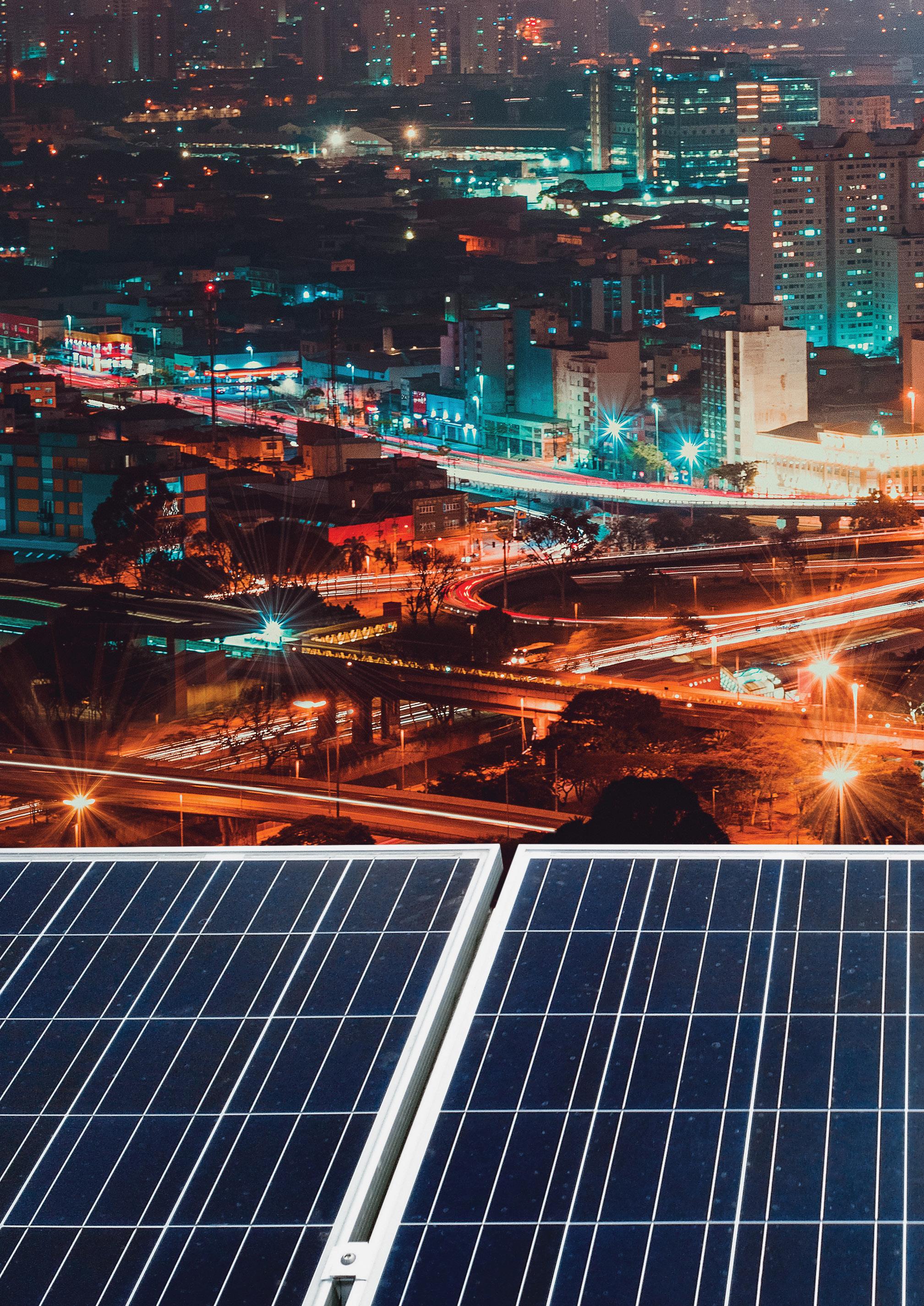
A Virtual Power Plant (VPP) is an emerging technology with the power to unite many Distributed Energy Resources (DERs), like home batteries, under a smart, cloud-based management system. The rise of VPPs has prompted interest from governments, utilities, and consumers alike – so what’s all the fuss about? In this article, we break down the fundamentals of VPPs, explore the live debate surrounding their future role in supporting the grid, as well as offer a consumer perspective on their development.
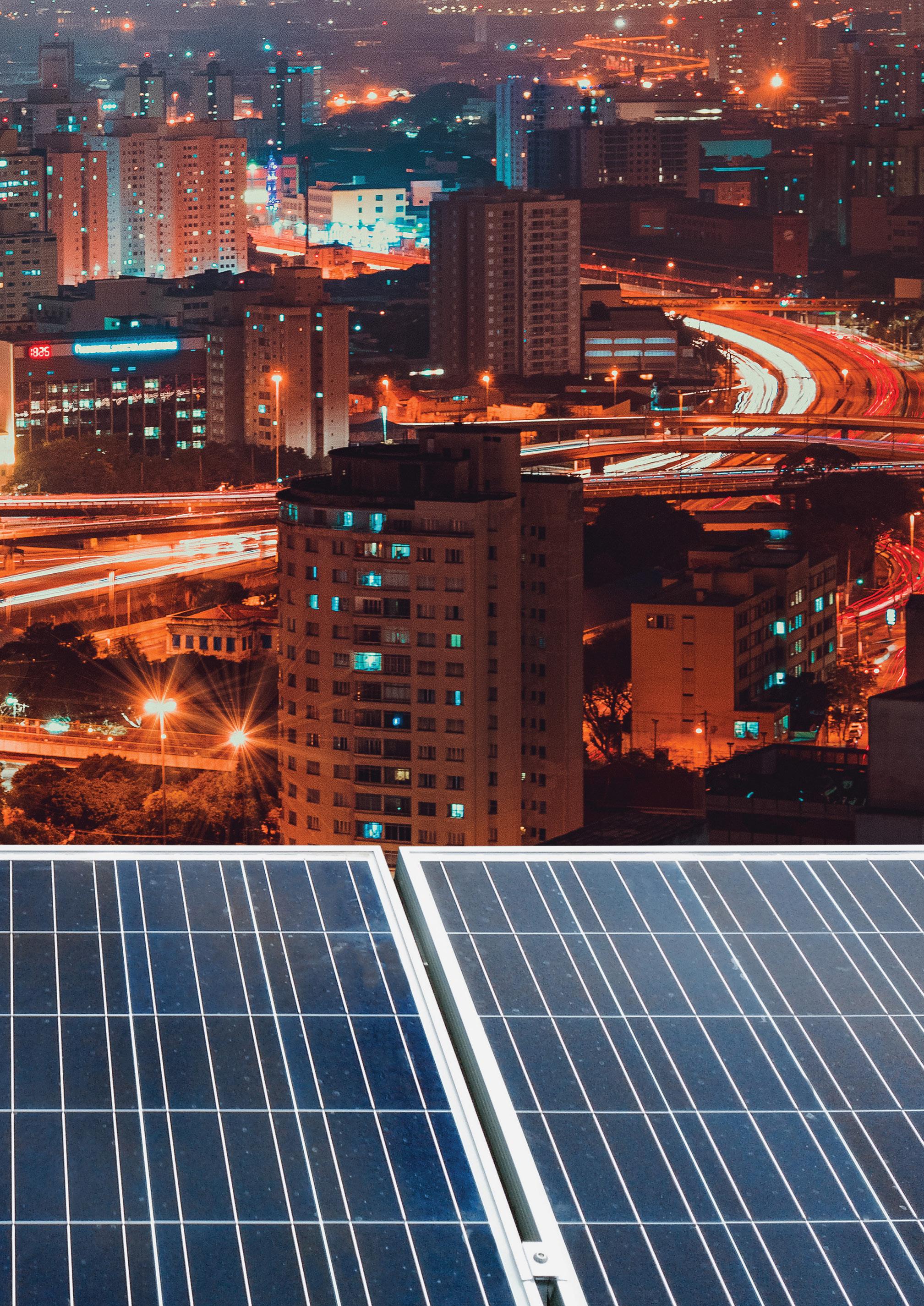
As Australia’s energy transition unfolds, new technologies and commercial models will help unlock the most value from a growing base of DERs, resources like rooftop solar systems, private battery storage units, and electrical vehicles.
Enter the VPP: an emerging technology offering new heights for DERs to participate in the daily management of Australia's grid.
The VPP model is quite simple: a centrally managed, cloud-based technology coordinates a large spread of distributed resources – perhaps several hundred household batteries – to meet local and live demands of the grid.
Customers participating in a VPP surrender some or all of the dispatchability of their asset to a central, cloud-based management system, opening up the asset to a variety of grid opportunities including voltage management and contingency reserve power.
Through its decentralised model, the VPP excels at aggregating storage and generation capacity of many different private resources, some of which may have otherwise been managed conservatively and locked ‘behind-the-meter’.
Emerging interest in VPPs reflects how Australia is a global leader when it comes to per capita uptake of DERs: national DER stock already comprises 2.5 million rooftop solar systems with a combined capacity exceeding 10GW, not to mention 73,000 home batteries at a combined capacity of 1.1GW.
And Australia’s close relationship with the DERs isn’t going anywhere: the most conservative scenarios in AEMO’s 2020 Integrated System Plan (ISP) still predicted DER growth of 200 per cent by 2040, with DERs eventually providing between 13 to 22 per cent of underlying National Energy Market (NEM) energy consumption.
Breaking VPPs into commercial viability is an intriguing prospect on the horizon for
the energy industry, given the sheer size and promise of Australia’s DER sector.
In 2019, AEMO launched a three-year trial of VPPs in Australia – the VPP Demonstrations program – providing “early insights on how to integrate VPPs into market frameworks at scale”.
The $7 million program was delivered in collaboration with commercial partners like AGL, Tesla and Energy Locals, for a total of eight operational VPPs distributed across all mainland states of the NEM.
The scale of the VPP Demonstrations was modest – boasting a total registered capacity of 31MW, comparable to “a small scheduled hybrid solar farm plus battery” and reaching approximately 7,150 VPP customers.
The lure of FCAS markets
Importantly, AEMO’s Demonstrations tested the capacity of VPPs to participate in Frequency Control Ancillary Services (FCAS) markets, an exciting frontier for integrating VPPs into the NEM.
In the most fundamental sense, frequency control services play an essential role in stabilising the frequency of the grid over short timescales, preventing network outages and other hazards.
Of the eight FCAS markets in the NEM, the first two are regulation services – raising and lowering grid frequency every four seconds, and smoothening mismatches in supply and demand.
The other six FCAS markets are contingency markets – with capacity that is only called upon when required – and they return the frequency of the grid to normal limits after an event like damage to a transmission line, or a sudden change in weather affecting renewable generation.
The eight operational VPPs in AEMO’s Demonstrations project all entered contingency FCAS markets successfully, thanks to a special regulatory framework for the trial.
For example, the Tesla VPP in South Australia, managed by retailer Energy
Locals, was approved by AEMO to operate at 10MW of capacity across all six of the FCAS contingency markets.
However, concerns still exist surrounding the suitability of VPP participation in FCAS markets when compared to assets that have been better studied and are more conventionally dispatchable.
Two common criticisms levelled at VPP participation in FCAS markets are that the operational margins of error for many VPPs are still too high given the longer latency times of many DER assets, and that there is room for growth for VPPs in terms of operational visibility and standardisation.
While the VPP Demonstrations were widely regarded for providing groundbreaking knowledge on the future of VPPs, the special regulatory approach that AEMO adopted during the trial has not been extended for the industry at large, due to mixed responses in the energy sector.
The two major regulatory adjustments made for VPPs to participate in FCAS markets were relaxing the interval of frequency metering to a duration of one second, as well as offering flexibility for metering at the point of inverter or controllable asset, as opposed to at the connection point.

AEMO signalled that neither of these regulatory concessions would be extended beyond the trial, recommending that FCAS participation requires latencies as fast as 200 milliseconds, and metering to be assessed at the connection point level.
In December 2021, AEMO released a Final Determination on the appropriate regulatory conditions for VPPs in the FCAS market, and industry partners were invited to share their perspectives.
A number of energy retailers and technology companies, such as Evergen, shared their disappointment in the final regulatory outcome for FCAS participation, pointing out that regulations, while important, could damage the commercial viability of VPPs in the short-term, as some DER assets would need to be upgraded to meet metering and latency requirements.
Ultimately, AEMO justified all of its final rulings, explaining how operational error rates were still a little high when using the trial conditions of the VPP Demonstrations, a concern that is especially pertinent because of the role that FCAS markets play in grid stability.
AEMO also pointed to how the VPP Demonstrations fulfilled its mission statement by offering unprecedented knowledge about industry readiness for the new technology, pointing to key recommendations for cybersecurity and operational visibility priorities for development in the VPP space.
One middle-ground solution raised among the industry submissions in AEMO’s Final Determination was the development of a separate set of regulatory conditions for FCAS participation that applies only to VPPs.
Beyond network and regulatory insights, another groundbreaking component in the VPP Demonstrations project was conducting social research into what is and isn’t working from a consumer perspective on VPPs.
Matt Armitage, the former Manager of DER Market Integration at AEMO, described key consumer insights achieved by the Demonstrations in a knowledge-sharing webinar held in September.
Mr Armitage explained that most customers were engaged and satisfied with VPP participation, yet emphasised future opportunities to “improve the quality and relevance of communication to consumers to enhance their engagement and retain their engagement”.
“Early adopters are still the ones really driving the uptake of VPPs, although we are getting into slightly broader parts of the market,” Mr Armitage said.
“If you are a VPP that’s just starting out, it’s probably useful to target early adopters to attract them into your VPP to begin with, and then to develop a strategy to attract other segments of customers as the market matures –- and as you as a VPP mature.”
The social research, conducted by Customer Service Benchmarking Australia (CSBA), also revealed that while customers are motivated by the savings achieved through subscribing their asset into a VPP scheme, two secondary motivations were the environmental impact of reducing emissions and the community impact of helping stabilise the grid from outages.
“It’s recommended to explore initiatives that broaden appeal to different types of consumers, particularly thinking about those other motivating factors like community benefits or environmental benefits, to attract and retain new customers,” Mr Armitage said.
In terms of managing customer experiences of VPPs over time, it is evident that key values include visibility and choice.
“Customers really loved having an app that they could look at every day,” Mr Armitage said.
“The app is a really strong tool to help improve the customer experience, so one of the recommendations is to develop a really strong app experience.”
Mr Armitage also explained how energy bill reviews can be used to ensure that customer expectations formed when first subscribing their asset into a VPP are being met, “Something to keep an eye on is customer-switching: how you develop strategies to target customers switching in to your VPP, and keeping an eye on replacements.”
A final consumer recommendation directed at VPP retailers is the appropriate investment in knowledgeable customer service staff.
“This is a kind of quite technical and complex part of the industry,” Mr Armitage said.
“Investment in customer service staff – to really have those detailed conversations with customers, to put customer concerns at ease and answer customer questions – is really valuable if you’re a VPP starting out.”
As the VPP market continues to mature, accommodating more and more DER assets and breaking into commercial viability, new conversations will emerge surrounding greater competition and operational
visibility among VPP retailers, as well as how customers can be empowered to find the right model for their asset.
for VPP projects
The eight VPPs of AEMO’s Demonstrations project, which have been given approval to operate under trial regulatory conditions until June 2023, are as follows:
» Energy Locals – Tesla (SA)
» AGL (SA)
» Simple Energy (SA)
» sonnen (NSW)
» ShineHub (SA)
» Energy Locals – Members Energy (VIC and NSW)
» Hydro Tasmania (QLD)
With AEMO’s national findings fully released, VPP retailers are continuing to gain traction nationally, expanding the technology into new models of commercial viability and a larger role in DER asset management.
In December 2021, Simply Energy announced that they will expand their VPP program out of South Australia and towards the eastern seaboard, as well as open the scheme up to five new battery brands.
Ryan Wavish, General Manager at Simply Energy, celebrated the VPP model for making a “significant dent” in the affordability of batteries and other renewable technologies.
In Western Australia, a $35.5 million trial of VPPs is just taking off, with Western Power, Synergy, AEMO and Energy Policy WA working together under an initiative named Project Symphony.
With VPP prospects growing nationally, the technological, regulatory and consumer knowledge emerging from AEMO’s Demonstrations should help steer VPP growth in the right direction.
Indeed, the new option for a VPP revenue stream for consumers purchasing their first DER asset should only continue to grow the essential national stock of home batteries, rooftop solar panels and electric vehicles.


The continual development and uptake of distributed energy resources (DER), like home solar and batteries, electric vehicles (EVs) and chargers, smart meters, and home energy management technologies, means that energy supply and storage is no longer exclusively a one-way system. The connectivity of these DER allows consumers to actively participate in their use of energy, and gives retailers more options for managing supply and demand.
Origin Energy has recently launched its new energy grid – named Origin Loop – a Virtual Power Plant (VPP) that connects thousands of energy assets through artificial intelligence (AI) to function like a traditional power station.
Brendan Manzie, Group Manager, Future Energy at Origin, said the VPP’s functionality is twofold, “There's a backend to it that allows us to now connect to, talk to, and orchestrate a range of different energy assets, both generation of energy and also demand points of energy. And, on the flip side, it's a customer experience and an engagement tool that ultimately allows for greater digital experiences.”
The notion behind the Loop was to move away from an energy system that was reliant on a small number of big points of supply in coal and gas generators, and instead create a much bigger connected network of devices to foster reciprocity between supply and demand.
“We now have around 100,000 connected customers and endpoints as part of the Loop,” Mr Manzie said. “And, we've done that in a way that spans a range of different energy asset types. So, we've got
everything from solar systems to batteries, to EV chargers, to hot water systems, to smart devices, large business customers, and even lots of small customers through behavioural demand response, all now connected to the Loop.”
A recipe for AI Origin Loop was developed over about 12 months, beginning with the build of an artificial intelligence engine that could communicate and connect with various points of energy supply and demand.
The VPP’s AI uses a range of data from weather forecasts, market trends and historical energy consumption, to communicate with the National Electricity Market (NEM) and with Origin’s large-scale generation assets, to optimise efficiency. This data helps to inform demand and supply forecasting, and gives an overview of what’s happening in the energy marketplace.
The next step is for the AI to look at the different assets connected to the VPP and their varying characteristics, such as when they are available, when they use energy, when they are dormant, and when they might be charging.
Finally, and importantly, the impact for the customer has to be considered, in order for them to “achieve their objectives of affordable sustainability”. So, the combination of historical and tailored forecasting data and the AI’s capability to react accordingly has been designed to create the most balanced system which makes the most use of renewables at the lowest cost, whilst offering the end customer the best value.
“That's really the secret sauce,” Mr Manzie said. “As we look ahead, we're seeing a space where there's going to be millions of connected points of supply and demand appearing very, very quickly in our grid.
“So that capability to understand when those assets are available, how a customer in the home or the business behaves, and therefore how to orchestrate those things in a dynamic fashion and learn from it, that's going to be really important.”
Consumer appetite for understanding
Mr Manzie believes that there’s an undercurrent among energy consumers of wanting to actively participate in reducing their energy consumption, and a thirst for an understanding of how they can be

more energy efficient – for both cost and energy-saving purposes.
This has resulted in a huge uptake in home solar and batteries being added to Origin’s VPP, which in turn helps to build better capabilities in the technology, thus adding value back to the consumer. Mr Manzie said that with this VPP participation, comes more engagement from consumers in terms of understanding their role in the energy ecosystem and an appetite for visibility of that.
“There's this real moment of awakening, where they're part of this now connected energy ecosystem,” Mr Manzie said.
Home solar and batteries are not an option for all energy consumers though, so in order to cater to the other segment of the market, Origin has integrated a demand response program called Spike into its Loop VPP. The program acts as an energysaving rewards program, which rewards consumers when they meet their energy targets (usually set for hours when energy demands peak).
Origin has been monitoring consumer activity through the program and, according to Mr Manzie, has witnessed excellent engagement from users and a sense of meaningful connection to energy consumption (i.e. understanding the impact of different energy-consuming devices like heating and cooling on bills and overall household consumption).
Energy consumers are also able to connect smart devices through the program, an incentive that has been popular.
“We have a capability in the backend where smart plugs and smart air conditioning controllers can be enrolled into our Spike program,” Mr Manzie said.
“Those devices can be automated to participate in energy-saving hours and Spike hours. It goes to show you, you've got these users out there who have these smart devices looking for ways to make them more useful in the home, and things like energy efficiency is a real emerging piece there.”
Mr Manzie said the ideal outcome for the VPP is for it to assist in accelerating the role that renewables can play in the energy system, and to deliver more renewable solutions to Origin’s customers in an affordable and simplified way.
In terms of energy retailers facilitating large-scale accessibility and affordability, Mr Manzie said there are some current solutions, like longer-term, low or zero interest payment plans, and incentives for coupling batteries with solar purchases. Mr Manzie emphasised the importance of “cash-flow neutrality” (where the costs that the consumer has to pay for solar and home batteries is more or less neutralised by the savings on their energy
bill) as an important element to compel consumer investment.
Unfortunately, there are still barriers for renters and those living in apartments when it comes to accessing energy-efficient schemes, which will likely require policy changes to rectify.
“There's definitely more work to be done there, to look at those models where renters and people living in apartments can access things like solar and storage,” Mr Manzie said.
Although there’s modelling from Origin and other retailers in that sector, Mr Manzie said that he’s yet to see anything promising yet, but anticipates more development to open up in the next five years or so.
“Bringing renewables into the system, normalising that for people is something that's worth backing and getting involved with, because one, you can deliver on cost and affordability, but two, you can deliver on those sustainability objectives,” Mr Manzie said.
Getting the groundwork right around the technology and connectivity, and underpinning regulations and policy that “level the playing field” between energy consumers and providers is paramount for Origin. Perhaps most importantly, Mr Manzie said, is that the consumer gets the right value, and the right experience.
“They're going to be an active part of a really positive, renewable future – and that is important.”

Powerlink was recently announced as the winner of the 2021 Energy Network Consumer Engagement Award for its engagement approach on its 2023-27 revenue determination process. Jointly run by Energy Networks Australia (ENA) and Energy Consumers Australia, the award recognises excellence in consumer and customer engagement by an Australian energy network. We asked Powerlink General Manager Communications, Customer & Engagement, Gerard Reilly, to provide some insights into the utility’s engagement mindset and approach.
Q: What were Powerlink’s goals in terms of customer engagement? Does the business feel that those goals were achieved?
A: The success of our engagement for our revenue determination was built on the strength of Powerlink’s business-asusual approach.
We established our Customer Panel in 2015 and have worked closely with panel members over the last six years to create an environment of trust and knowledge sharing. Showing our vulnerabilities as a business is important.
Our engagement approach is built on having conversations with customers on topics where we don’t know the answer, and then use their input to improve the decisions we make.
For our 2023-27 revenue determination, we set a clear goal to deliver a Revenue Proposal that is capable of acceptance by our

customers, the Australian Energy Regulator (AER) and Powerlink. To achieve this we knew our customer engagement would need to step up to a new level.
We were extremely pleased when both the AER, in its Draft Decision, and our Customer Panel stated that we had met that capable of acceptance goal.
I think we have changed the way that network businesses view engagement for Revenue Proposals and moved the capable of acceptance goal from being aspirational to achievable.
Q: How did Powerlink integrate customers, market bodies, and board and executive teams within the business into the revenue determination engagement process?
A: The key learning from our previous revenue determination was to better involve our customers in developing our approach to engaging with them – a co-design process.
Our commitment to a co-design approach and achieving capable of acceptance was embraced and encouraged by our Board and Executive.
Our engagement started almost two years before our Revenue Proposal was due for submission with a co-design workshop held in May 2019. This was the first time a network business codesigned its engagement approach for a revenue determination.
We workshopped our engagement approach, scope, techniques and evaluation processes.
Setting a clear engagement scope was particularly important. We wanted to focus engagement on the items that really mattered –and could be influenced through customer input.
We had customers plot aspects of our revenue determination on a graph against two axis – one was that elements impact on Maximum Allowed Revenue (in other words the amount that consumers pay Powerlink over the five-year regulatory period), and the other was the ability for that element to be influenced through the Revenue Determination process.

But we went further. We then plotted these aspects against the IAP2 Spectrum so that customers could clearly gain an expectation of how much influence they could have against each aspect.
We established a Revenue Proposal Reference Group, a sub-set of our wider Customer Panel, via an Expression of Interest process.
The Reference Group allowed for deeper and more frequent engagement on key topics, creating greater awareness and understanding of the issues, trade-offs and consequences of taking various courses of action. The Reference Group met 13 times over 18 months.
Outcomes of Reference Group meetings were then communicated back to the wider Customer Panel by one of the members. Our Customer Panel also met a number of times by themselves to consider our engagement approach and come back to us on areas that required further discussion.
To achieve our capable of acceptance goal, we also needed to engage early, regularly and genuinely with the AER and the AER Consumer Challenge Panel.
AER and AER Consumer Challenge Panel representatives attended Customer Panel and Reference Group meetings. These representatives also met monthly with our team as we provided early versions of our models for AER cross-checking as well as information on an ad hoc basis.
Q: What does customer engagement mean to Powerlink?
A: Powerlink has an underlying thematic of world-class. We want to push and challenge ourselves to be world-class in everything we do – customer engagement is no exception.
As a transmission business, we have a diverse range of customer segments. From the five million Queenslanders who rely on our services to customers directly connected or seeking to connect to our network – such as renewable generators.
Customers have to play an active role in the energy system transformation. We need to ensure that no customer segment is left behind. So, as an industry, we need to better engage with our customers to make the best possible decisions.
A key focus of Powerlink’s new corporate strategy is to ‘Drive Value for Customers’. You can only do this effectively if you are having active discussions with customers on topics they can influence and are of importance to them.
We have also continued to build engagement capacity within Powerlink, with many technical experts participating in an engagement setting for the first time. Their exposure to our Customer Panel and Revenue Proposal Reference Group has reinforced our customer focus across more technical areas of the business.
Q: What insights can Powerlink share with the industry following the revenue determination process?
A: A key learning was that we did not appreciate the challenges associated with defining ‘capable of acceptance’ and determining what this means up-front. We should have engaged earlier on the criteria and set expectations with customers and the AER.
We also learned that to have any chance of achieving a Revenue Proposal that was capable of acceptance, all parties involved must truly be on board and play their part in trying to achieve something greater than the sum-of-the-parts. This takes trust and a leap of faith.
We showed our customers the willingness to pivot and adjust our approach based on their direct feedback. A good example was our decision to publish a Draft Revenue Proposal. This wasn’t in our original plans but we changed following discussions with our Customer Panel.
We also struggled to connect with regional stakeholders, not only due to COVID impacting our ability to travel to regional areas, but as a transmission business, we struggle for broader stakeholder involvement in engagement activities. We have recently appointed new members to our Customer Panel to better represent the view of regional customers.
Another key insight is the importance of education and building capacity with customers. We want feedback from customers, but the value comes from receiving informed feedback. It is up to us to educate and build wider industry understanding so they can optimise their input.
There was great value in using our existing and long-standing Customer Panel members at the core of our engagement for our Revenue Proposal. They understand Powerlink and the operating environment we are facing and were therefore best placed to help shape our thinking.
Our engagement on the Revenue Proposal was time-intensive. We asked a lot of our customer representatives, so it was important that we sought to financially reimburse engagement participants for their time. Members of the Reference Group were offered an hourly rate. For 2022 this has been expanded to members of our Customer Panel.
Q: What does customer engagement look like in Powerlink’s future?
A: The sheer breadth of change that comes with the energy system transformation means that meeting the needs and expectations of the communities we work in is more important than ever.
We are also a founding signatory of The Energy Charter, with a key focus in 2022 on improving the way that transmission businesses engage with landholders and communities impacted by new energy infrastructure.
We have always held a strong view that engaging with local communities is an important part of providing our electricity transmission services. Now more than ever we are focusing on partnerships that deliver local community benefits for the long term.

Energy affordability is a key issue for consumers and communities across Australia. With household energy debt on the rise, the Australian Energy Regulator (AER) has raised concerns about the lack of customer support through retailer hardship programs, and the effectiveness of these programs in tackling debt. Here, we review how responses to the energy debt crisis have evolved during the pandemic, as well as consider new approaches emerging from retailers and community groups that put consumers first when it comes to energy affordability.
An industry report and statement from the AER released in late-2021 warned of a climb in average household energy debt, as experiences of energy affordability over the last two years reflect the pressures of the COVID-19 crisis.
The rise in energy debt comes despite state and territory trends of falling energy prices, and has sparked a new dialogue about energy affordability in the industry, with mounting pressure for national bodies, energy retailers and community groups to collaborate further and empower consumers to beat the trend of energy debt.
The AER’s Annual retail markets report 2020-21 found that average household debt for gas and electricity combined has increased 12 per cent, from $897 in 2019–20 to $1,000 in 2020–21.
The report also found that the average electricity debt for a customer entering a retailer’s hardship program grew 21 per cent over the same period – increasing from $1,304 to $1,584.
The AER’s concerns extend to both why fewer customers are seeking support from retailers, as well as seeking ways to ensure greater effectiveness of these programs.
The energy debt findings in the AER’s report reflect ongoing challenges to energy affordability felt by consumers over the last two years.
During the height of the COVID-19 crisis, the AER responded nationally to concerns about energy affordability by releasing a Statement of Expectations to retailers.
The Statement of Expectations asked retailers to protect customers from disconnections and support struggling customers with their bills through hardship support programs, building on the existing expectation that retailers take some responsibility for their customers and their capacity to pay.
All energy retailers must offer hardship policies by law, enabling residential customers to enter payment arrangements that fairly reflect their own capacity to pay and help prevent spiralling debt.
However, AER Chair, Clare Savage, said that despite retailers having an obligation to identify whether a customer is experiencing hardship, the drop in both the uptake and efficacy of hardship support programs during the pandemic was concerning for all parties.
“It’s not surprising that energy debt rose due to the effects of the COVID-19 pandemic, and not surprising to see an increase in people on payment plans to manage their bills,” Ms Savage said.
“But we are not out of the COVID woods yet, and with our data showing more than 262,000 people paying off some form of energy debt, it does raise questions as to why there is a drop in the number of customers entering hardship programs.”
Ms Savage called for retailers to improve the accessibility of tailored hardship programs for customers, and even warned retailers to sure up their internal protocols for responding to customers in financial difficulty or face consequences.
“Our compliance and enforcement priorities for 2021–22 include a focus on reducing customer debt … we will be monitoring retailers to ensure they are identifying residential consumers in financial
difficulty and offering them payment plans that have regard to their capacity to pay, where relevant,” Ms Savage said.
Added pressure on energy retailers to put consumer outcomes first comes as power and gas retailer Sumo Energy was fined $500,000 for alleged unlawful disconnections of 143 customers in 2020.
Federal Minister for Industry, Energy and Emissions Reduction, Angus Taylor, emphasised the Federal Government’s commitment to hold retailers accountable and ensure they provide necessary support to customers in hardship.
“Energy costs are continuing to fall. This is good news for Australian families and small businesses,” Mr Taylor said.
“However, as providers of an essential service, it is critical that energy companies step up to deliver necessary support to any customers doing it tough.”
The Energy Charter recently conducted interviews with all signatory CEOs to identify common ground practises that put consumer outcomes first and included energy affordability goals in the national energy transition.
New initiatives raised by Energy Charter CEOs included:
» Increasing solar connections in regional areas of Western Australia and more automated processing of concession entitlements
» Longstanding relationships with community organisations such as Uniting to deliver support to the most vulnerable customers
» Extending the Energy Support Programs to Tasmanian residential and business customers through COVID
» Proactively using energy data and analytics to better understand energy usage profiles and target customers in hardship
» Targeted campaigns that encourage customers to claim energy concessions and rebates
» The development of a Vulnerable Customer Assistance Program
» The innovative #BetterTogether “train the trainer” program with Voices for Power, Sydney Alliance, that offers energy literacy training in Western Sydney for culturally and linguistically diverse communities
Greater collaboration and knowledge-sharing among energy industry CEOs is critical to ensure energy affordability and tackling energy debt remains a part of a national conversation, as is the work of community groups working at the front line in the energy debt crisis.
Because hardship support programs can take many different forms – including face-to-face support approaches, financial counselling, energy audits and conventional payment plans –offering tailored solutions for consumers is vital to manage the energy debt crisis.
“For the past 20 years we’ve tried different tactics to manage the issues and barriers to consumers participating in the energy market,” Ms Savage said.
“Hardship programs will always be needed, but now is the time for the energy sector to ask what else we could do to support consumers who find themselves in vulnerable situations, especially when they least expect it.”
BRISBANE 16-18 MARCH

Brisbane Convention & Exhibition Centre
Registration is still open!
For further information visit: www.EN2022.com.au

Pacific Green Energy Storage Technologies delivers industry leading expertise gained from the deployment of hundreds of megawatts of capacity globally.
Wherever you are in the world, we can provide a full review and consultancy service to assess your requirements, deliver a full implementation and commissioning service, and make sure you benefit from fully automated, trouble-free operation with one of the most advanced battery systems on the market.
info@pacificgreen.tv
www.pacificgreen-energystorage.com

Evaluating your energy storage battery return on investment.
We’ll help you identify applications that can drive value and deliver a quicker payback on your capital outlay.
Delivering fast, effective installation and commissioning.
Once you’ve chosen the right system for your business, we’ll install the battery, enclosure and control software on a turnkey basis.
Guaranteeing trouble-free operation.
We offer the latest in energy storage battery technology coupled with a range of system-level guarantees, giving you absolute peace of mind.